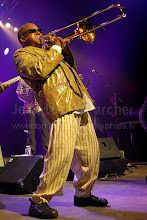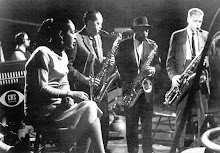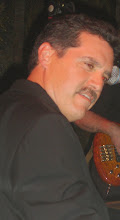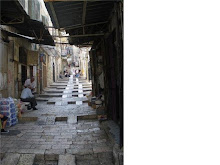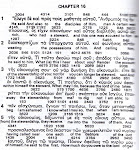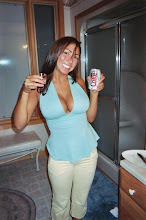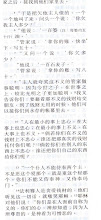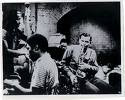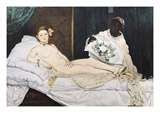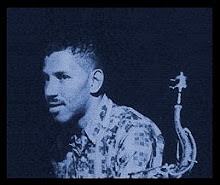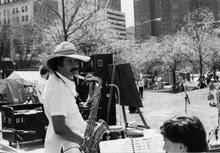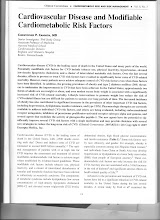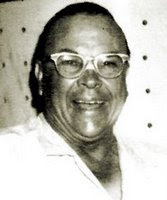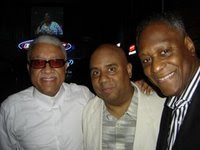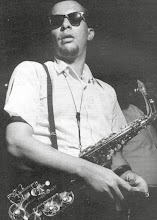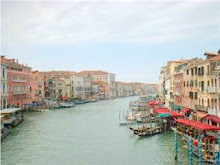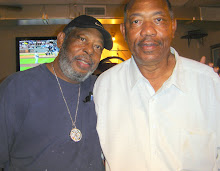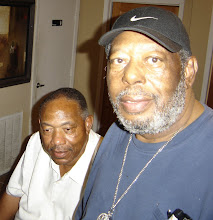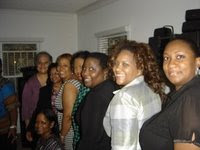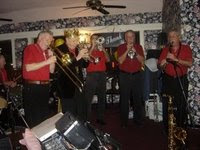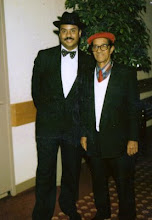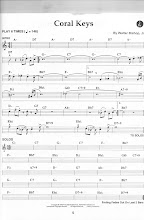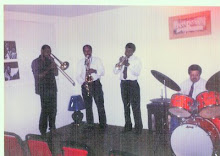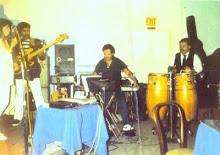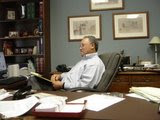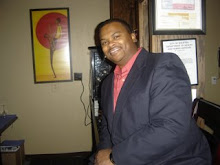Tuesday, November 25, 2008
Monday, November 24, 2008
Freddie HubbARD @ 70 Y/O- dE mAN-FROM sf cHRON ARTICLE 3/08
 JOHN RUBIEN -AUTHOR
JOHN RUBIEN -AUTHORLISTEN AS YOU READ FOR THE EXPERIENCE
For a guy who's considered to be one of the four or five greatest trumpet players in jazz history, Freddie Hubbard sure has taken some lumps.
Back in the '70s, when adopting electric instruments and rock stylings earned jazz artists the scarlet "sellout" S - unlike today, when it's a badge of innovation - it seemed Hubbard took the most flak, even though many of his peers were doing it. It was as if a collective "Freddie, say it ain't so!" went up. It's why Hubbard's producer and arranger, trumpeter David Weiss, calls Hubbard the Barry Bonds of jazz.
"He's the one guy who seems to be taking the brunt of the s- for everybody's whatever," Weiss says, "whether it's fusion, irresponsibility, drug use."
Hubbard doesn't get too exercised over it, though.
"They've got to jump on somebody," he says.
Fact is, he's got bigger things to worry about. For example, his own trumpet turned on him. This occurred in 1992, when Hubbard was on a pressure-cooker tour that brought him to New York, Finland and Japan in a single week. At the Blue Note in New York, "I was playing so hard, my lip popped," he says. A blister formed, but instead of taking some time off, Hubbard flew straight to Finland for another gig, and the blister popped onstage.
"Blood was everywhere, man," Hubbard says.
Then the lip became infected. When it failed to heal, a doctor ordered a biopsy. It came back negative, but Hubbard kept trying to play, which wasn't good for his lip or his reputation. Eventually, he slowed down so much it looked as if he was going to cash in his career, at which point, in the late '90s, Weiss rode to the rescue.
"I call him my baby," Hubbard says, chortling heartily. "He brought me back to work. He called me out of the blue and said, 'C'mon, Freddie, you've got to play some more.' "
On April 7, Hubbard turns 70, and he's celebrating with a series of shows Thursday through Saturday at the San Francisco Yoshi's. Four of his band members - vibraphonist Bobby Hutcherson, alto saxophonist James Spaulding, drummer Lenny White and pianist George Cables - have been playing with Hubbard since the '60s, and Spaulding grew up with him in Indianapolis. The other players for the birthday shows are tenor saxophonist Craig Handy, bassist Dwayne Burno and Weiss.
"It'll be good to be back at Yoshi's. I used to play there all the time, But what with my lip, they've been scared to book me," he says, laughing.
Hubbard is speaking by phone from his Sherman Oaks home in Southern California's San Fernando Valley. He's lived in the area since the early '70s, the period of his brightest stardom, when he was putting out big-selling records such as "Sky Dive," "Red Clay" and "First Light," which won a Grammy for the title song.
By then he had already made dozens of records as a leader and played on hundreds of others. He wasn't only the hardest-working trumpeter in show business, he was also the best, with a gleaming, quicksilver sound that combined the brass of Louis Armstrong with the bebop power of Clifford Brown and the melodic grace of Miles Davis.
"Nobody's played longer, higher, harder or faster than Freddie Hubbard, for more years," Weiss says by phone from New York. "Nobody. Not even close. There's nobody you can compare him to."
Hubbard was lucky, of course, to come up in an era where jazz giants not only roamed the Earth, but a lot of them also lived around the corner. That was the '60s, when the Crown Heights section of Brooklyn was something of a mecca for jazz artists.
"I lived with (saxophonist) Eric Dolphy for a year and a half," Hubbard says. "(Pianist) McCoy Tyner lived down the block." He ticks off the name of his neighbors: "(Bassist) Paul Chambers, (pianists) Cedar Walton, Bobby Timmons, Kenny Barron, Wynton Kelly."
The critical mass of these artists and the camaraderie among them are what distinguishes that era from today's, according to Hubbard.
"We would play with each other and study," he says. "I used to go over to somebody's house every day. Sonny Rollins. I would go over to his house and ask him questions, practice with him. Coltrane, too."
Not that it was easy for Hubbard to get accepted by this crowd when he first arrived in New York from Indianapolis in 1958.
"It took about a month before I had a chance to sit in" at the jam sessions, he says "They wouldn't let me. Finally, I just took my horn and walked up on the bandstand."
He made his mark, but paid gigs came slowly at first because, he says, everyone wanted trumpet players to sound like Dizzy Gillespie or Davis.
"I was playing like Clifford, and I met Miles, and he said (Hubbard imitates Davis' raspy growl), 'You like Clifford?' And I said, 'Yeah, I think he's the baddest around.' And Miles said, 'Nah, he plays too much. He's too staccato. He plays too many notes.'
"Then he said to me, 'Freddie, you play too many notes. Ain't nobody can hear all that s-.' But he got me my first gig with Blue Note records."
Hubbard cut about a dozen records for Blue Note, including "Hub Cap" and "Ready for Freddie," and he played on countless classics for the label: Wayne Shorter's "Speak No Evil," Dolphy's "Out to Lunch," Herbie Hancock's "Takin' Off." It wasn't just Blue Note, of course. Hubbard played on John Coltrane's "Ascension," Ornette Coleman's "Free Jazz," Oliver Nelson's "The Blues and the Abstract Truth" and far too many more albums to name.
"As a trumpet player, nobody's been able to do what he can do on the instrument," Weiss says. "It's just ridiculous."
Musicians who hired Hubbard "could expand how they wrote things because they knew Freddie would be able to play them," Weiss adds. "And that makes great records possible."
Now, of course, the spiel on Hubbard is that he's lost his chops. But, Weiss says, "he's still capable of doing things weakened that nobody else can do." For proof, listen to Hubbard's comeback album, "New Colors," released in 2001 on Hip Bop. Backed by Weiss' New Jazz Composers Octet, Hubbard's genius comes through on flugelhorn played on several of his classic tunes. Some of the pyrotechnics are missing from his arsenal, but his sense of melody and rhythm are 100 percent.
Hubbard has another CD with the octet in the can and an all-star date with drummer Louis Hayes, pianist Roland Hanna and bassist Ron Carter due for Blue Note.
"The trumpet is rough, man, especially the way I play," Hubbard says. "I used to play all over the horn, like a saxophone. It takes a little more stamina. I used to play so long ... 30 choruses. People don't do that s- no more."
So, yes, his trumpet struck back at him. Not that he holds it against the instrument.
"I was lucky. I got to play with everybody I wanted to play with. And that trumpet took me all over the world, man. I really appreciate it."
Back in the '70s, when adopting electric instruments and rock stylings earned jazz artists the scarlet "sellout" S - unlike today, when it's a badge of innovation - it seemed Hubbard took the most flak, even though many of his peers were doing it. It was as if a collective "Freddie, say it ain't so!" went up. It's why Hubbard's producer and arranger, trumpeter David Weiss, calls Hubbard the Barry Bonds of jazz.
"He's the one guy who seems to be taking the brunt of the s- for everybody's whatever," Weiss says, "whether it's fusion, irresponsibility, drug use."
Hubbard doesn't get too exercised over it, though.
"They've got to jump on somebody," he says.
Fact is, he's got bigger things to worry about. For example, his own trumpet turned on him. This occurred in 1992, when Hubbard was on a pressure-cooker tour that brought him to New York, Finland and Japan in a single week. At the Blue Note in New York, "I was playing so hard, my lip popped," he says. A blister formed, but instead of taking some time off, Hubbard flew straight to Finland for another gig, and the blister popped onstage.
"Blood was everywhere, man," Hubbard says.
Then the lip became infected. When it failed to heal, a doctor ordered a biopsy. It came back negative, but Hubbard kept trying to play, which wasn't good for his lip or his reputation. Eventually, he slowed down so much it looked as if he was going to cash in his career, at which point, in the late '90s, Weiss rode to the rescue.
"I call him my baby," Hubbard says, chortling heartily. "He brought me back to work. He called me out of the blue and said, 'C'mon, Freddie, you've got to play some more.' "
On April 7, Hubbard turns 70, and he's celebrating with a series of shows Thursday through Saturday at the San Francisco Yoshi's. Four of his band members - vibraphonist Bobby Hutcherson, alto saxophonist James Spaulding, drummer Lenny White and pianist George Cables - have been playing with Hubbard since the '60s, and Spaulding grew up with him in Indianapolis. The other players for the birthday shows are tenor saxophonist Craig Handy, bassist Dwayne Burno and Weiss.
"It'll be good to be back at Yoshi's. I used to play there all the time, But what with my lip, they've been scared to book me," he says, laughing.
Hubbard is speaking by phone from his Sherman Oaks home in Southern California's San Fernando Valley. He's lived in the area since the early '70s, the period of his brightest stardom, when he was putting out big-selling records such as "Sky Dive," "Red Clay" and "First Light," which won a Grammy for the title song.
By then he had already made dozens of records as a leader and played on hundreds of others. He wasn't only the hardest-working trumpeter in show business, he was also the best, with a gleaming, quicksilver sound that combined the brass of Louis Armstrong with the bebop power of Clifford Brown and the melodic grace of Miles Davis.
"Nobody's played longer, higher, harder or faster than Freddie Hubbard, for more years," Weiss says by phone from New York. "Nobody. Not even close. There's nobody you can compare him to."
Hubbard was lucky, of course, to come up in an era where jazz giants not only roamed the Earth, but a lot of them also lived around the corner. That was the '60s, when the Crown Heights section of Brooklyn was something of a mecca for jazz artists.
"I lived with (saxophonist) Eric Dolphy for a year and a half," Hubbard says. "(Pianist) McCoy Tyner lived down the block." He ticks off the name of his neighbors: "(Bassist) Paul Chambers, (pianists) Cedar Walton, Bobby Timmons, Kenny Barron, Wynton Kelly."
The critical mass of these artists and the camaraderie among them are what distinguishes that era from today's, according to Hubbard.
"We would play with each other and study," he says. "I used to go over to somebody's house every day. Sonny Rollins. I would go over to his house and ask him questions, practice with him. Coltrane, too."
Not that it was easy for Hubbard to get accepted by this crowd when he first arrived in New York from Indianapolis in 1958.
"It took about a month before I had a chance to sit in" at the jam sessions, he says "They wouldn't let me. Finally, I just took my horn and walked up on the bandstand."
He made his mark, but paid gigs came slowly at first because, he says, everyone wanted trumpet players to sound like Dizzy Gillespie or Davis.
"I was playing like Clifford, and I met Miles, and he said (Hubbard imitates Davis' raspy growl), 'You like Clifford?' And I said, 'Yeah, I think he's the baddest around.' And Miles said, 'Nah, he plays too much. He's too staccato. He plays too many notes.'
"Then he said to me, 'Freddie, you play too many notes. Ain't nobody can hear all that s-.' But he got me my first gig with Blue Note records."
Hubbard cut about a dozen records for Blue Note, including "Hub Cap" and "Ready for Freddie," and he played on countless classics for the label: Wayne Shorter's "Speak No Evil," Dolphy's "Out to Lunch," Herbie Hancock's "Takin' Off." It wasn't just Blue Note, of course. Hubbard played on John Coltrane's "Ascension," Ornette Coleman's "Free Jazz," Oliver Nelson's "The Blues and the Abstract Truth" and far too many more albums to name.
"As a trumpet player, nobody's been able to do what he can do on the instrument," Weiss says. "It's just ridiculous."
Musicians who hired Hubbard "could expand how they wrote things because they knew Freddie would be able to play them," Weiss adds. "And that makes great records possible."
Now, of course, the spiel on Hubbard is that he's lost his chops. But, Weiss says, "he's still capable of doing things weakened that nobody else can do." For proof, listen to Hubbard's comeback album, "New Colors," released in 2001 on Hip Bop. Backed by Weiss' New Jazz Composers Octet, Hubbard's genius comes through on flugelhorn played on several of his classic tunes. Some of the pyrotechnics are missing from his arsenal, but his sense of melody and rhythm are 100 percent.
Hubbard has another CD with the octet in the can and an all-star date with drummer Louis Hayes, pianist Roland Hanna and bassist Ron Carter due for Blue Note.
"The trumpet is rough, man, especially the way I play," Hubbard says. "I used to play all over the horn, like a saxophone. It takes a little more stamina. I used to play so long ... 30 choruses. People don't do that s- no more."
So, yes, his trumpet struck back at him. Not that he holds it against the instrument.
"I was lucky. I got to play with everybody I wanted to play with. And that trumpet took me all over the world, man. I really appreciate it."
SPECULATION ECONOMY (SE)
I don't know what happened, but this will be my second attempt to address the STOCK MARKET mess. This SE book is the best to deal with the historical aspects of the Republican screw job and its legalization through corporate charters at the state level, all whcih led to the Military-Industrial (now including Correctional ) syndrome.
It all started in England. I do not think the book deals with the way things were handled B4 THE QUEEN - Victoria but basically if it was good for her it was good for England and she issued a charter. America emulted by giving the states the right to issue charters whch generated income for the individual states via fees and taxes.
This right without zealous overview became abused through OVERCAPITALIZATION (OC)which basically means the selling of securities after many years of business costs have been capitalized. This put more money into the pockets of the fat-cats ( and caused a draining of the overall capital pool from further R and D of potentially more products ) without a regard for the graft potential created via lobbying and sellouts at legislative bodies. Monopolies could be created with the only way for dividends to be paid, would be by overcharging for the good or service. The greater degree of OC the greater potential for monopoly and the greater potential for the goods or service cost to go up. This coupled with the lack of regulation caused Benjamin Tillman of North Carolina to lash out at the intelligence of allowing "fictitious valuation". Teddy Roosevelt in 1910 had the ____ to initiate Acts of Congress (MANN-ELKINS ACT) to the consternation of sold out legislatures
It all started in England. I do not think the book deals with the way things were handled B4 THE QUEEN - Victoria but basically if it was good for her it was good for England and she issued a charter. America emulted by giving the states the right to issue charters whch generated income for the individual states via fees and taxes.
This right without zealous overview became abused through OVERCAPITALIZATION (OC)which basically means the selling of securities after many years of business costs have been capitalized. This put more money into the pockets of the fat-cats ( and caused a draining of the overall capital pool from further R and D of potentially more products ) without a regard for the graft potential created via lobbying and sellouts at legislative bodies. Monopolies could be created with the only way for dividends to be paid, would be by overcharging for the good or service. The greater degree of OC the greater potential for monopoly and the greater potential for the goods or service cost to go up. This coupled with the lack of regulation caused Benjamin Tillman of North Carolina to lash out at the intelligence of allowing "fictitious valuation". Teddy Roosevelt in 1910 had the ____ to initiate Acts of Congress (MANN-ELKINS ACT) to the consternation of sold out legislatures
Sunday, November 23, 2008
Don Wilkerson
 From forum.saxontheweb.net/showthread.php?t=88179
From forum.saxontheweb.net/showthread.php?t=88179Please note far left image. It looks like Fathead Newman on the far right
TIGNON? Then Headdress?
tignon (also spelled and pronounced tiyon) is a series of headscarves or a large piece of material tied or wrapped around the head that resembles the West African gélé. It was worn by Creole and African-American women in Louisiana beginning in the Spanish colonial period, and continuing to a much lesser extent to the present day. This headgear was the result of sumptuary laws passed in 1785 under the administration of Governor Esteban Rodriguez Miró. Called the tignon laws, they prescribed appropriate public dress for female gens de couleur in colonial society (which included women like Marie Laveau At this time in Louisiana history, women of color vied with white women in beauty, dress and manners. Many of them had become the placées of white French and Spanish Creole men, and this threatened and angered their wives, mothers, sisters, daughters and fiancées. One complaint that found currency with the authorities was that white men, in pursuing flirtations or liaisons, sometimes mistook and accosted women of the elite for the light-skinned, long-haired, but mixed-race women. Alleged portrait of Marie Laveau, hangs in the Louisiana State Library in the old Cabildo in New Orleans File history Legend: (cur) = this is the current file, (del) = delete this old version, (rev) = revert to this old version. ... The term Louisiana Creole refers to people of any race or mixture thereof who are descended from settlers in colonial Louisiana before it became part of the USA in 1803 with the Louisiana Purchase, or to the culture and Creole cuisine typical of these people. ... An African American (also Afro-American or Black American, or black) is a member of an ethnic group in the United States whose ancestors, usually in predominant part, were indigenous to Africa. ... Official language(s) English and French Capital Baton Rouge Largest city New Orleans at last census; probably Baton Rouge since Hurricane Katrina Area - Total - Width - Length - % water - Latitude - Longitude Ranked 31st 134,382 km² 210 km 610 km 16 29°N to 33°N 89°W to 94°W Population... Louisiana sold in 1803 by Napoléon to USA, which was a portion of the historical extent of French Louisiana Louisiana (French language: La Louisiane) was the name of an administrative district of New France in the 17th and 18th centuries. ... Sumptuary laws (from the Latin sumtuariae leges) are laws which dictated, amongst other things, what color and type of clothing individuals were allowed to own and wear. ... This article needs to be wikified. ... Alleged portrait of Marie Laveau, which hangs in the Louisiana State Library in the Cabildo. ... Plaçage was an recognized extralegal system by which predominantly wealthy and white Creole men in Louisiana entered into the equivalent of common-law marriages with women of both African and white Creole descent known as placées (from the French word placer which means to place with). ...
A young Creole woman of color in a tignon of her own creation. Note that the rosette in the tignon is repeated as either a brooch or in the linen at her neck. Painting from the Historic New Orleans Collection, and taken from BlackCreoles.com.
As a result, Governor Miró decreed that women of color and black women, slave or free, should cover their hair and heads with a knotted headdress and refrain from "excessive attention to dress" themselves in jewels or feathers to maintain class distinctions. But the women who were targets of this decree were inventive and imaginative. They decorated tignons with their jewels or by using the finest colored materials with which to wrap their hair. In other words, "[t]hey effectively re-interpreted the law without technically breaking the law"[1]--and they continued to be pursued by men. Image File history File links Headdress. ... Image File history File links Headdress. ... Class ASCII art NFO header by a!b. ...
Black women modeling variations of the tignon during a lecture by Barbara Levigne on "The Tignon and Women of Color in Old New Orleans," at the New Orleans Main Library in July, 2005.)
The tignon can be wrapped in many ways, and part of its uniqueness is that it was and is worn in an entirely different way by every woman. Madras was a popular fabric for tignons among both free and slave populations, and has become iconic. Tignons were often created out of scraps of undyed fabric given to slaves by their masters. The fabrics, of course, were of seemingly disparate weaves, prints or patterns. Wasted or flawed material was made to unaccountably match and appear festive. The tignons worn by women of color or African women slaves in Louisiana and the Caribbean were much more distinctive, however, than those worn by American black slaves, and even had hidden messages.[2] Image File history File links Img_2585. ... Image File history File links Img_2585. ... Madras is a lightweight cotton fabric with patterned texture, used primarily for summer clothing -- pants, shorts, dresses and jackets. ...
The tignon or gélé is experiencing a resurgence in African American fashion. Celebrities such as Erykah Badu and Jill Scott have revived it, transforming the controversial headwrapping into a celebration of African-American culture. An African American (also Afro-American, Black American, or simply black), is a member of an ethnic group in the United States whose ancestors, usually in predominant part, were indigenous to Africa. ... Erykah Badu Erykah Badu (born Erica Abi Wright on February 26, 1971 in Dallas, Texas) is an American R&B/hip hop artist whose work crosses over into jazz. ... Jill Scott Jill Scott (born April 4, 1972) is a jazz and rhythm and blues and neo-soul singer. ... An African American (also Afro-American or Black American, or black) is a member of an ethnic group in the United States whose ancestors, usually in predominant part, were indigenous to Africa. ...
A young Creole woman of color in a tignon of her own creation. Note that the rosette in the tignon is repeated as either a brooch or in the linen at her neck. Painting from the Historic New Orleans Collection, and taken from BlackCreoles.com.
As a result, Governor Miró decreed that women of color and black women, slave or free, should cover their hair and heads with a knotted headdress and refrain from "excessive attention to dress" themselves in jewels or feathers to maintain class distinctions. But the women who were targets of this decree were inventive and imaginative. They decorated tignons with their jewels or by using the finest colored materials with which to wrap their hair. In other words, "[t]hey effectively re-interpreted the law without technically breaking the law"[1]--and they continued to be pursued by men. Image File history File links Headdress. ... Image File history File links Headdress. ... Class ASCII art NFO header by a!b. ...
Black women modeling variations of the tignon during a lecture by Barbara Levigne on "The Tignon and Women of Color in Old New Orleans," at the New Orleans Main Library in July, 2005.)
The tignon can be wrapped in many ways, and part of its uniqueness is that it was and is worn in an entirely different way by every woman. Madras was a popular fabric for tignons among both free and slave populations, and has become iconic. Tignons were often created out of scraps of undyed fabric given to slaves by their masters. The fabrics, of course, were of seemingly disparate weaves, prints or patterns. Wasted or flawed material was made to unaccountably match and appear festive. The tignons worn by women of color or African women slaves in Louisiana and the Caribbean were much more distinctive, however, than those worn by American black slaves, and even had hidden messages.[2] Image File history File links Img_2585. ... Image File history File links Img_2585. ... Madras is a lightweight cotton fabric with patterned texture, used primarily for summer clothing -- pants, shorts, dresses and jackets. ...
The tignon or gélé is experiencing a resurgence in African American fashion. Celebrities such as Erykah Badu and Jill Scott have revived it, transforming the controversial headwrapping into a celebration of African-American culture. An African American (also Afro-American, Black American, or simply black), is a member of an ethnic group in the United States whose ancestors, usually in predominant part, were indigenous to Africa. ... Erykah Badu Erykah Badu (born Erica Abi Wright on February 26, 1971 in Dallas, Texas) is an American R&B/hip hop artist whose work crosses over into jazz. ... Jill Scott Jill Scott (born April 4, 1972) is a jazz and rhythm and blues and neo-soul singer. ... An African American (also Afro-American or Black American, or black) is a member of an ethnic group in the United States whose ancestors, usually in predominant part, were indigenous to Africa. ...
ANN RICE: REALITY/FICTION? Historical EPOCH?
Single Novels The Feast of All Saints
THIS SHOULD KEEP YOU BUSY!
From http://www.annerice.com/Bookshelf-FeastSaints.html
Set in 1840's New Orleans, this historical novel traces the journey of the community of free people of color who were feared and ignored by whites. Suspended between worlds of blacka nd white, finding stability only int their own community, they live in tension and ambiguity that form their greatest strength and their greatest weakness. The protagonist is a 14 year old boy named Marcel with one white and one free black parent. Together with his sister and two close friends they deal with the transition of adolescence and its mirror in the ambiguity of their social position. Marcel awakens when his idol, a famous novelist and free man of color comes to New Orleans to open a school. Marcel has been promised an education by his rich white father and Marcel intends to make it at Christophe's school. Meanwhile, his sister Marie is being courted by a prosperous and respected friend of Marcel's, but her vulnerability and the plans of other jeopardize her happiness. Marcel is making his own journey to adulthood through relationships with Christophe and his family. When it is announced that Marcel is to learn a trade to support himself instead of finish academic study, Marcel rebels, is removed from school, and wanders seeking the truth about who he is and what he was meant to do.A painfully historically rich and accurate novel that delicately and clearly draws patterns of irony and injustice together through complex family relationships and social structures, The Feast of All Saints was Anne Rice's second novel.
Feast of All Saints Discussion Questions
Discuss whether The Feast of All Saints a coming of age tale. How does it differ from most other tales that deal with the trials and tribulations of maturation?
Marcel and Marie are the children of a French plantation owner, Philippe Ferroniare and his mistress, Cecile. Discuss the father son relationship between Marcel and Philippe. How does this relationship differ from most other father son relationships in mid-1800 New Orleans?
At what age was Marcel baptized? For the 1840’s, is this a common age for New Orleans Catholics to receive their baptism?
Who are the gens de couluer libres? Describe their social existence. What has history forgotten about them?
What most surprised you about the gens de couluer?
Who is Christophe? What is his profession? What sort of person is he? Does Christophe encapsulate the Byronic hero or does Marcel? Discuss the relationship between Christophe and Marcus. Who is Anna-Belle? Discuss the relationship between her and Marcus. What effects do these two characters have on Marcus?
What does Jean Jacques offer the young Marcel?
What specifically is a quadroon? What is the etymology of this word?
Madame Elisie Calvière recalls the days before the Louisiana Purchase, when New Orleans was a French colony and then ruled by the Spanish Empire. Discuss the “Tignon Law” passed by Governor Esteban Miró in 1785. Discuss the repercussions of this law. Though this law has long since been abolished, does some measure of this law evince itself in today’s day and age?
Josette, Marcel’s aunt, informs him of his family’s experience of the African Diaspora, and she discusses with him the Haitian Revolution. Discuss the affect the African Diaspora had along the Cane River. What effects did the Haitian Revolution have on New Orleans slave trade? In what ways does the Haitian Revolution differ from the Slave Revolt of 1811 New Orleans?
New Orleans and Paris are juxtaposed in this novel. Discuss how France’s capital differs from one of its former colonies only 130 years after the founding of New Orleans. Discuss whether or not Rice has adequately depicted this cultural divergence.
Rice relies greatly on historicity to propel the plot of Feast Of All Saints. For example: A quadroon is free to study the revolution of photography. Etc. Do these historical events help drive the plot and overall themes of the novel? In what way(s) does Rice’s historical research enable the reader to empathize with the protagonist and other characters?
Which religion is the norm in 1840 New Orleans? What distinguishes this religion from the religious celebrated along the Cane River? What is the commonality and distinction between the two faiths? Discuss whether Rice’s research has portrayed these religious practices well.
Lisette leads Marie to the house of a voodooienne. How is Voodoo different from the spiritual practice of the Creoles? How is Voodoo different from Hoodoo? Discuss the divergence of Louisiana Voodoo from Haitian Voodoo. Why does Rice find it necessary to include Louisiana Voodoo in this novel?
Is Rice’s attitude toward the Civil War reflected in this novel? Discuss her attitude toward slaves in contrast with the free people of color. Is there a greater sympathy shown toward one or the other or both equally?
How did this novel change your view of black history before the civil war?
Who is the local madam? Discuss why Marie would seek refuge under the roof of Dolly Rose.
Cecile is the mistress of Phillippe Ferronaire. Anna Bella is Vincent Danzicourt’s mistress. Marie is assaulted by five men and is then betrothed to Richard as a result. Discuss some of the various dispositions men have toward women in this book.
This novel is entitled The Feast Of All Saints. Discuss why Rice would associate this novel with a celebration of the Roman Catholic Church on the first of November. Who are the saints of this novel? What kind of saints are they? Martyrs? Virgins? Holy men and women?
Mini-series Discussion Questions
How does screenwriter, James Wilder, adapt the novel? Anne has claimed he is the most faithful adapter of her work. Do you agree?
Wilder expanded the role of Dolly Rose for the mini-series. Was he faithful to the character and the work?
Does Ben Vereen faithfully capture the vigor of Rudolph Lermontant?
THIS SHOULD KEEP YOU BUSY!
From http://www.annerice.com/Bookshelf-FeastSaints.html
Set in 1840's New Orleans, this historical novel traces the journey of the community of free people of color who were feared and ignored by whites. Suspended between worlds of blacka nd white, finding stability only int their own community, they live in tension and ambiguity that form their greatest strength and their greatest weakness. The protagonist is a 14 year old boy named Marcel with one white and one free black parent. Together with his sister and two close friends they deal with the transition of adolescence and its mirror in the ambiguity of their social position. Marcel awakens when his idol, a famous novelist and free man of color comes to New Orleans to open a school. Marcel has been promised an education by his rich white father and Marcel intends to make it at Christophe's school. Meanwhile, his sister Marie is being courted by a prosperous and respected friend of Marcel's, but her vulnerability and the plans of other jeopardize her happiness. Marcel is making his own journey to adulthood through relationships with Christophe and his family. When it is announced that Marcel is to learn a trade to support himself instead of finish academic study, Marcel rebels, is removed from school, and wanders seeking the truth about who he is and what he was meant to do.A painfully historically rich and accurate novel that delicately and clearly draws patterns of irony and injustice together through complex family relationships and social structures, The Feast of All Saints was Anne Rice's second novel.
Feast of All Saints Discussion Questions
Discuss whether The Feast of All Saints a coming of age tale. How does it differ from most other tales that deal with the trials and tribulations of maturation?
Marcel and Marie are the children of a French plantation owner, Philippe Ferroniare and his mistress, Cecile. Discuss the father son relationship between Marcel and Philippe. How does this relationship differ from most other father son relationships in mid-1800 New Orleans?
At what age was Marcel baptized? For the 1840’s, is this a common age for New Orleans Catholics to receive their baptism?
Who are the gens de couluer libres? Describe their social existence. What has history forgotten about them?
What most surprised you about the gens de couluer?
Who is Christophe? What is his profession? What sort of person is he? Does Christophe encapsulate the Byronic hero or does Marcel? Discuss the relationship between Christophe and Marcus. Who is Anna-Belle? Discuss the relationship between her and Marcus. What effects do these two characters have on Marcus?
What does Jean Jacques offer the young Marcel?
What specifically is a quadroon? What is the etymology of this word?
Madame Elisie Calvière recalls the days before the Louisiana Purchase, when New Orleans was a French colony and then ruled by the Spanish Empire. Discuss the “Tignon Law” passed by Governor Esteban Miró in 1785. Discuss the repercussions of this law. Though this law has long since been abolished, does some measure of this law evince itself in today’s day and age?
Josette, Marcel’s aunt, informs him of his family’s experience of the African Diaspora, and she discusses with him the Haitian Revolution. Discuss the affect the African Diaspora had along the Cane River. What effects did the Haitian Revolution have on New Orleans slave trade? In what ways does the Haitian Revolution differ from the Slave Revolt of 1811 New Orleans?
New Orleans and Paris are juxtaposed in this novel. Discuss how France’s capital differs from one of its former colonies only 130 years after the founding of New Orleans. Discuss whether or not Rice has adequately depicted this cultural divergence.
Rice relies greatly on historicity to propel the plot of Feast Of All Saints. For example: A quadroon is free to study the revolution of photography. Etc. Do these historical events help drive the plot and overall themes of the novel? In what way(s) does Rice’s historical research enable the reader to empathize with the protagonist and other characters?
Which religion is the norm in 1840 New Orleans? What distinguishes this religion from the religious celebrated along the Cane River? What is the commonality and distinction between the two faiths? Discuss whether Rice’s research has portrayed these religious practices well.
Lisette leads Marie to the house of a voodooienne. How is Voodoo different from the spiritual practice of the Creoles? How is Voodoo different from Hoodoo? Discuss the divergence of Louisiana Voodoo from Haitian Voodoo. Why does Rice find it necessary to include Louisiana Voodoo in this novel?
Is Rice’s attitude toward the Civil War reflected in this novel? Discuss her attitude toward slaves in contrast with the free people of color. Is there a greater sympathy shown toward one or the other or both equally?
How did this novel change your view of black history before the civil war?
Who is the local madam? Discuss why Marie would seek refuge under the roof of Dolly Rose.
Cecile is the mistress of Phillippe Ferronaire. Anna Bella is Vincent Danzicourt’s mistress. Marie is assaulted by five men and is then betrothed to Richard as a result. Discuss some of the various dispositions men have toward women in this book.
This novel is entitled The Feast Of All Saints. Discuss why Rice would associate this novel with a celebration of the Roman Catholic Church on the first of November. Who are the saints of this novel? What kind of saints are they? Martyrs? Virgins? Holy men and women?
Mini-series Discussion Questions
How does screenwriter, James Wilder, adapt the novel? Anne has claimed he is the most faithful adapter of her work. Do you agree?
Wilder expanded the role of Dolly Rose for the mini-series. Was he faithful to the character and the work?
Does Ben Vereen faithfully capture the vigor of Rudolph Lermontant?
Read and Weep . No wonder . I need to let the Lord fight my battle!
From http://www.dailygrail.com/node/6998
DAILY GRAILE
All I can say is that several of my friends failed out of a majority white school after pledging "greek" organizations. I was asked by A Phi A and Kappa Alpha Psi. The only thing I considered was being a "dog". They are far removed from this BOULE mentioned below
The BOULE (Sigma Pi Phi Fraternity) is perhaps one of the first black Greek letter fraternities that was founded in 1904, but most of its founders were Prince Hall Masons and/or had strong Masonic affiliations. The term BOULE means “advisor to the king”. Steve Cokley is considered the authority on the BOULE, he has a video series titled, “Boule Buster: The Plot To Destroy Black Education”. Frontline Magazine did an article titled, “Boule” stated, “We know the Illuminati (Rhodes/Rothschild secret society) also goes by the name, the ROUND TABLE GROUP the Boule, which created the 8 black fraternities and sororities (now known as the Divine Nine). Rockefeller is a subdivision of the Rhodes/Rothschild or New World Order regime.” Charles H. Wesley who was a prominent Prince Hall Mason wrote the definitive history of the Boule (Sigma Pi Phi Fraternity) titled, Reference: Charles H. Wesley; “History of Sigma Pi Phi, first of the Negro-American Greek-letter fraternities”).
This African-American secret society is a “powerful” fraternity and sorority known as the BOULE which is a Freemasonic type organization that attracts some of the top black politicians, intellectuals, business persons, etc, and those who are considered influential and part of the black bourgeoisie.
W.E.B. Dubois preached and advocated that blacks should pursue a classical and/or Liberal Arts education, as opposed to Booker T. Washington espousing technical training. Dubois model was geared towards sending 10% of the black population to the universities and colleges of higher learning with an objective of attaining liberal arts education and coming back to the black community and help to elevate the race. Dubois and historians called this theory the “Talented Tenth” theory (Reference: W.E.B. Dubois “The Souls of Black Folk”). Also, there is an interesting book written by Charles H. Wesley, titled, “The History of Alpha Phi Alpha: A Development in College Life” that deals African American race, class and the pursuit of education.
The Boule has been known for attracting the African American Talented Tenth for now over a century; it was described this way “the quintessential brotherhood for African-American men." The incoming Grand Sire Archon, New Orleans banker and financier Charles Teamer, says the Boule "is unique because no other organization brings together so many talented leaders--sometimes you have in the same room the mayor and the biggest educational and economic leaders in town--and no other organization provides such an unparalleled opportunity to mentor, change structures, and build bridges." He says his administration will concentrate on mentoring, creating new international connections and moving networking to another level.
The BOULE was originally styled after the Skull Bones Fraternity conceived as an organization that would contain the "best of Skull and Bones of Yale and of Phi Beta Kappa," In the keynote address, Archon Vernon Jordan Jr. (former aid to Bill Clinton and Civil Right leader) presented a 12-point program for personal and collective renewal, saying, among other things, that "we must create a new sense of community among our own ... bridge the growing economic gap within the Black community [and] re-Brown Brown to counter the long slide back into de facto segregation." We must also, he said, "constantly remind the new entrants into the Talented Tenth that their exciting jobs in corporate America and investment banking and in law firms are not the result of their grades and their ability and their school all by themselves. They did not get there by themselves ... and they have to know it."
The Skull and Bones of Yale University, the author John Lawrence Reynolds book titled, “Secret Societies: Inside The World’s Most Notorious Organizations” he assess this secret society by stating, “One, however, exerts day-to-day influence over the lives of virtually everyone on the planet, and it achieved this not with a tightly structured organization but via an association of privileged young men attending a prestigious university. Its existence is verifiable, its history is linked to MASONIC traditions and the ILLUMINATI objectives, its practices remain shadowy, and its activities are replete with suspicious behavior. It is Skull & Bones, a hatchery of American leadership whose members has not only achieved POWER and Prominence on a scale far in excess of their numbers, but retains their close bond throughout their careers, creating at least the semblance of a cabal and perhaps something much more than that.”
Now! The above assessment is real high degree Freemasonry because these OATH TAKERS of an Elite sector of our society have sworn to use their DYNASTIC influence (High Finance) that is tied too prominent banking families and have placed their Devotes in every decision making endeavor which to influence the political, economic and social reality of world society. The 33rd Degree in Freemasonry under Ancient and Accepted Scottish Rite is styled the Sovereign Grand Inspector General. This degree is an honorary and conferred degree and it is not up for petition; thus entry into this final and terminal degree is only at the recommendation of another 33rd Degree Mason.
The ceremonies and rituals of this conferment ordinarily include some of the most powerful men in the United States in particular and the world in general. We learn in the ritual a set of questions and answers that reads like this: QUESTIONS: Are you a Sovereign Grand Inspector General? ANSWER: By giving you the past word. QUESTION: Begin. ANSWER: Jacques de Molay. QUESTION: Hiram Abif. ANSWER: Frederick of Prussia. QUESTION: What are the meanings of the skeletons skulls, bones and torches in our Council? ANSWER: They serve to remind of the massacre of our ancestors by Philippe the Fair who delivered them to the most cruel tortures. QUESTION: Why do you appear in mourning armed with a sword? Answer: To mourn their loss and be ready to avenge them. QUESTION: Who established this degree? ANSWER: Our Illustrious Brother of Brunswick, Frederick, King of Prussia.
This writer wonder does the Skull and Bones and Black BOULE’ have a loose philosophical connection to The United Supreme Council of Sovereign Grand Inspectors General of the Thirty-Third and Last Degree in Freemasonry. This writer resides in Durham, which the Mayor of the city William V. “Bill” Bell is a BOULE’ member and in a recent citywide mayoral race, Obama came to Durham and endorsed the black BOULE member and it left this writer inquisitive whether his relationship with BOULE’ Mayor Bell was based on them both being perhaps OATH TAKERS. A writer in Ebony Magazine who authored and article titled,“1904-2004: the Boule at 100: Sigma Pi Phi Fraternity Holds Centennial Celebration” stated, “What makes the Boule's success all the more interesting is that it was founded as a secret or quasi-secret organization and did not seek public notice until the 1960s and 1970s”
On most of the white college campus throughout America; they had white only Greek lettered societies and organizations, in which their existed a long tradition of social and academic prosperity and social networking that ventured far beyond college life into the social, political, and economic lives of its members, as far as politically maneuvering and stationing its members in key positions through society. The undergraduate mission statement for most Greek Letter Fraternities on the white college campus was getting drunk and partying and having a good social time, but many of these students were third and fourth generation Greek Letter Oath Takers and their parents were getting them prepared for the task of leading humanity (once they sobered up). The Skull and Bones was founded on the campus of Yale University in the year of 1832 and is perhaps the most powerful and influential college fraternity in America. Black Greek Lettered Fraternities and Sororities are miniature Skull and Bones organization, but lack the real Elite networking, which is reserved for those individuals who will eventually be initiated in the REAL ORDERS (many are call, few chosen) such as the Bilderberger, Council on Foreign Relations, and the Trilateral Commission this is the real brotherhood and sisterhood that rule over humanity and their membership is not based on race or ethnicity, but on an ideology that is rooted in the principles of GLOBALIZATION AND A ONE WORLD GOVERNMENT. (Reference: Gary Allen and Larry Abraham; “None Dare Call it Conspiracy”)
Fahim A. Knight-EL Chief
DAILY GRAILE
All I can say is that several of my friends failed out of a majority white school after pledging "greek" organizations. I was asked by A Phi A and Kappa Alpha Psi. The only thing I considered was being a "dog". They are far removed from this BOULE mentioned below
The BOULE (Sigma Pi Phi Fraternity) is perhaps one of the first black Greek letter fraternities that was founded in 1904, but most of its founders were Prince Hall Masons and/or had strong Masonic affiliations. The term BOULE means “advisor to the king”. Steve Cokley is considered the authority on the BOULE, he has a video series titled, “Boule Buster: The Plot To Destroy Black Education”. Frontline Magazine did an article titled, “Boule” stated, “We know the Illuminati (Rhodes/Rothschild secret society) also goes by the name, the ROUND TABLE GROUP the Boule, which created the 8 black fraternities and sororities (now known as the Divine Nine). Rockefeller is a subdivision of the Rhodes/Rothschild or New World Order regime.” Charles H. Wesley who was a prominent Prince Hall Mason wrote the definitive history of the Boule (Sigma Pi Phi Fraternity) titled, Reference: Charles H. Wesley; “History of Sigma Pi Phi, first of the Negro-American Greek-letter fraternities”).
This African-American secret society is a “powerful” fraternity and sorority known as the BOULE which is a Freemasonic type organization that attracts some of the top black politicians, intellectuals, business persons, etc, and those who are considered influential and part of the black bourgeoisie.
W.E.B. Dubois preached and advocated that blacks should pursue a classical and/or Liberal Arts education, as opposed to Booker T. Washington espousing technical training. Dubois model was geared towards sending 10% of the black population to the universities and colleges of higher learning with an objective of attaining liberal arts education and coming back to the black community and help to elevate the race. Dubois and historians called this theory the “Talented Tenth” theory (Reference: W.E.B. Dubois “The Souls of Black Folk”). Also, there is an interesting book written by Charles H. Wesley, titled, “The History of Alpha Phi Alpha: A Development in College Life” that deals African American race, class and the pursuit of education.
The Boule has been known for attracting the African American Talented Tenth for now over a century; it was described this way “the quintessential brotherhood for African-American men." The incoming Grand Sire Archon, New Orleans banker and financier Charles Teamer, says the Boule "is unique because no other organization brings together so many talented leaders--sometimes you have in the same room the mayor and the biggest educational and economic leaders in town--and no other organization provides such an unparalleled opportunity to mentor, change structures, and build bridges." He says his administration will concentrate on mentoring, creating new international connections and moving networking to another level.
The BOULE was originally styled after the Skull Bones Fraternity conceived as an organization that would contain the "best of Skull and Bones of Yale and of Phi Beta Kappa," In the keynote address, Archon Vernon Jordan Jr. (former aid to Bill Clinton and Civil Right leader) presented a 12-point program for personal and collective renewal, saying, among other things, that "we must create a new sense of community among our own ... bridge the growing economic gap within the Black community [and] re-Brown Brown to counter the long slide back into de facto segregation." We must also, he said, "constantly remind the new entrants into the Talented Tenth that their exciting jobs in corporate America and investment banking and in law firms are not the result of their grades and their ability and their school all by themselves. They did not get there by themselves ... and they have to know it."
The Skull and Bones of Yale University, the author John Lawrence Reynolds book titled, “Secret Societies: Inside The World’s Most Notorious Organizations” he assess this secret society by stating, “One, however, exerts day-to-day influence over the lives of virtually everyone on the planet, and it achieved this not with a tightly structured organization but via an association of privileged young men attending a prestigious university. Its existence is verifiable, its history is linked to MASONIC traditions and the ILLUMINATI objectives, its practices remain shadowy, and its activities are replete with suspicious behavior. It is Skull & Bones, a hatchery of American leadership whose members has not only achieved POWER and Prominence on a scale far in excess of their numbers, but retains their close bond throughout their careers, creating at least the semblance of a cabal and perhaps something much more than that.”
Now! The above assessment is real high degree Freemasonry because these OATH TAKERS of an Elite sector of our society have sworn to use their DYNASTIC influence (High Finance) that is tied too prominent banking families and have placed their Devotes in every decision making endeavor which to influence the political, economic and social reality of world society. The 33rd Degree in Freemasonry under Ancient and Accepted Scottish Rite is styled the Sovereign Grand Inspector General. This degree is an honorary and conferred degree and it is not up for petition; thus entry into this final and terminal degree is only at the recommendation of another 33rd Degree Mason.
The ceremonies and rituals of this conferment ordinarily include some of the most powerful men in the United States in particular and the world in general. We learn in the ritual a set of questions and answers that reads like this: QUESTIONS: Are you a Sovereign Grand Inspector General? ANSWER: By giving you the past word. QUESTION: Begin. ANSWER: Jacques de Molay. QUESTION: Hiram Abif. ANSWER: Frederick of Prussia. QUESTION: What are the meanings of the skeletons skulls, bones and torches in our Council? ANSWER: They serve to remind of the massacre of our ancestors by Philippe the Fair who delivered them to the most cruel tortures. QUESTION: Why do you appear in mourning armed with a sword? Answer: To mourn their loss and be ready to avenge them. QUESTION: Who established this degree? ANSWER: Our Illustrious Brother of Brunswick, Frederick, King of Prussia.
This writer wonder does the Skull and Bones and Black BOULE’ have a loose philosophical connection to The United Supreme Council of Sovereign Grand Inspectors General of the Thirty-Third and Last Degree in Freemasonry. This writer resides in Durham, which the Mayor of the city William V. “Bill” Bell is a BOULE’ member and in a recent citywide mayoral race, Obama came to Durham and endorsed the black BOULE member and it left this writer inquisitive whether his relationship with BOULE’ Mayor Bell was based on them both being perhaps OATH TAKERS. A writer in Ebony Magazine who authored and article titled,“1904-2004: the Boule at 100: Sigma Pi Phi Fraternity Holds Centennial Celebration” stated, “What makes the Boule's success all the more interesting is that it was founded as a secret or quasi-secret organization and did not seek public notice until the 1960s and 1970s”
On most of the white college campus throughout America; they had white only Greek lettered societies and organizations, in which their existed a long tradition of social and academic prosperity and social networking that ventured far beyond college life into the social, political, and economic lives of its members, as far as politically maneuvering and stationing its members in key positions through society. The undergraduate mission statement for most Greek Letter Fraternities on the white college campus was getting drunk and partying and having a good social time, but many of these students were third and fourth generation Greek Letter Oath Takers and their parents were getting them prepared for the task of leading humanity (once they sobered up). The Skull and Bones was founded on the campus of Yale University in the year of 1832 and is perhaps the most powerful and influential college fraternity in America. Black Greek Lettered Fraternities and Sororities are miniature Skull and Bones organization, but lack the real Elite networking, which is reserved for those individuals who will eventually be initiated in the REAL ORDERS (many are call, few chosen) such as the Bilderberger, Council on Foreign Relations, and the Trilateral Commission this is the real brotherhood and sisterhood that rule over humanity and their membership is not based on race or ethnicity, but on an ideology that is rooted in the principles of GLOBALIZATION AND A ONE WORLD GOVERNMENT. (Reference: Gary Allen and Larry Abraham; “None Dare Call it Conspiracy”)
Fahim A. Knight-EL Chief
Saturday, November 22, 2008
What child if This? Some you Just LOVE to burn, but let God do the Burning. Time is drawing nigh
I just got some time , and I still have JOY. They can not take IT, in SPITE OF EXAGERATING ,LYING negative PROSECUTORS, LYING -KILLING DEA AGENTS AND OTHERS LINED UP WITH THE WORLD ORDER. Who will be translated in the twinkling of an eye? I bet those left wish would have read this
Do you have a Dis – Ease and lack of PEACE about what is going on? Faith, power, JOY, LOVE, and Spiritual maturity is all a result of the lack of discernment which is part of the disease ultimately of an non-existent relationship with Jesus Christ. I do not care what my future holds but I know who holds the future!
2 Thessalonians Message 1:4
We're so proud of you; you're so steady and determined in your faith despite all the hard times that have come down on you. We tell everyone we meet in the churches all about you. 5-10 All this trouble is a clear sign that God has decided to make you fit for the kingdom. You're suffering now, but justice is on the way. When the Master Jesus appears out of heaven in a blaze of fire with his strong angels, he'll even up the score by settling accounts with those who gave you such a bad time.
2 Thes 2: King James
2 That ye be not soon shaken in mind, or be troubled, neither by spirit, nor by word, nor by letter as from us, as that the day of Christ is at hand.
3 Let no man deceive you by any means: for that day shall not come, except there come a falling away first, and that man of sin be revealed, the son of perdition;
4 Who opposeth and exalteth himself above all that is called God, or that is worshipped; so that he as God sitteth in the temple of God, shewing himself that he is God.
What a Surprise in the OLD TESTAMENT!
Zechariah 11: 15
And the LORD said unto me, Take unto thee yet the instruments of a foolish shepherd. 16 For, lo, I will raise up a shepherd in the land, which shall not visit those that be cut off, neither shall seek the young one, nor heal that that is broken, nor feed that that standeth still: but he shall eat the flesh of the fat, and tear their claws in pieces.
Psalm 147: 2- 6
GOD's the one who rebuilds Jerusalem, who regathers Israel's scattered exiles.
He heals the heartbroken and bandages their wounds.
He counts the stars and assigns each a name. Our Lord is great, with limitless strength;
we'll never comprehend what he knows and does.
GOD puts the fallen on their feet again and pushes the wicked into the ditch And from
Isaiah 61:1,2 Masoretic (King James Translators)
The Spirit of the Lord GOD [is] upon me; because the LORD hath anointed me to preach good tidings unto the meek; he hath sent me to bind up the brokenhearted, to proclaim liberty to the captives, and the opening of the prison to [them that are] bound; 2 To proclaim the acceptable year of the LORD, and the day of vengeance of our God; to comfort all that mourn;
And lastly Ephesians 4:
THINK GARDEN OR BIRTH B4 con men
14 That we henceforth be no more children, tossed to and fro, and carried about with every wind of doctrine, by the sleight of men, and cunning craftiness, whereby they lie in wait to deceive; 15 But speaking the truth in love, may grow up (thinkinto him in all things, which is the head, even Christ:
AGain an Addendum PREACHED Lately?
to the cure with JESUS supplying the antithesis of the Zechariah passage:
16 From whom (this uses the word HOSa hole for birth) the whole body fitly joined together and compacted by that which every joint supplieth, according to the effectual working in the measure of every part, maketh increase of the body unto the edifying of itself in love. RU coming out of the HOLE? Are you doing a head stand on top of Jesus?
Do you have a Dis – Ease and lack of PEACE about what is going on? Faith, power, JOY, LOVE, and Spiritual maturity is all a result of the lack of discernment which is part of the disease ultimately of an non-existent relationship with Jesus Christ. I do not care what my future holds but I know who holds the future!
2 Thessalonians Message 1:4
We're so proud of you; you're so steady and determined in your faith despite all the hard times that have come down on you. We tell everyone we meet in the churches all about you. 5-10 All this trouble is a clear sign that God has decided to make you fit for the kingdom. You're suffering now, but justice is on the way. When the Master Jesus appears out of heaven in a blaze of fire with his strong angels, he'll even up the score by settling accounts with those who gave you such a bad time.
2 Thes 2: King James
2 That ye be not soon shaken in mind, or be troubled, neither by spirit, nor by word, nor by letter as from us, as that the day of Christ is at hand.
3 Let no man deceive you by any means: for that day shall not come, except there come a falling away first, and that man of sin be revealed, the son of perdition;
4 Who opposeth and exalteth himself above all that is called God, or that is worshipped; so that he as God sitteth in the temple of God, shewing himself that he is God.
What a Surprise in the OLD TESTAMENT!
Zechariah 11: 15
And the LORD said unto me, Take unto thee yet the instruments of a foolish shepherd. 16 For, lo, I will raise up a shepherd in the land, which shall not visit those that be cut off, neither shall seek the young one, nor heal that that is broken, nor feed that that standeth still: but he shall eat the flesh of the fat, and tear their claws in pieces.
Psalm 147: 2- 6
GOD's the one who rebuilds Jerusalem, who regathers Israel's scattered exiles.
He heals the heartbroken and bandages their wounds.
He counts the stars and assigns each a name. Our Lord is great, with limitless strength;
we'll never comprehend what he knows and does.
GOD puts the fallen on their feet again and pushes the wicked into the ditch And from
Isaiah 61:1,2 Masoretic (King James Translators)
The Spirit of the Lord GOD [is] upon me; because the LORD hath anointed me to preach good tidings unto the meek; he hath sent me to bind up the brokenhearted, to proclaim liberty to the captives, and the opening of the prison to [them that are] bound; 2 To proclaim the acceptable year of the LORD, and the day of vengeance of our God; to comfort all that mourn;
And lastly Ephesians 4:
THINK GARDEN OR BIRTH B4 con men
14 That we henceforth be no more children, tossed to and fro, and carried about with every wind of doctrine, by the sleight of men, and cunning craftiness, whereby they lie in wait to deceive; 15 But speaking the truth in love, may grow up (think
AGain an Addendum PREACHED Lately?
to the cure with JESUS supplying the antithesis of the Zechariah passage:
16 From whom (this uses the word HOS
Thursday, November 20, 2008
Monday, November 17, 2008
Refraction of Light from a simulated BLACK HOLE?
I realize that all you see is probably part of some experiment that a pHd student
has figured out. Well here goes.
It appears that the different colors are due to the variation of the speed of refraction.
Yet can anyone tell me why there are two of the same with the bottom one showing up first.
has figured out. Well here goes.
It appears that the different colors are due to the variation of the speed of refraction.
Yet can anyone tell me why there are two of the same with the bottom one showing up first.
Math: OF LIGHT RefrACTION
Lesson 2: The Mathematics of Refraction
The Angle of Refraction
Refraction is the bending of the path of a light wave as it passes across the boundary separating two media. Refraction is caused by the change in speed experienced by a wave when it changes medium. In Lesson 1, we learned that if a light wave passes from a medium in which it travels slow (relatively speaking) into a medium in which it travels fast, then the light wave will refract away from the normal. In such a case, the refracted ray will be farther from the normal line than the incident ray; this is the SFA rule of refraction. On the other hand, if a light wave passes from a medium in which it travels fast (relatively speaking) into a medium in which it travels slow, then the light wave will refract towards the normal. In such a case, the refracted ray will be closer to the normal line than the incident ray is; this is the FST rule of refraction. These two rules regarding the refraction of light only indicate the direction which a light ray bends; they do not indicate how much bending occurs. Lesson 1 focused on the topics of "What causes refraction?" and "Which direction does light refract?" Lesson 2 will focus on the question of "By how much does light refract when it crosses a boundary?"
The question is: "By how much does light refract when it crosses a boundary?" Perhaps there are numerous answers to such a question. (For example, " a lot," "a little," "like wow! quite a bit dude," etc.) The concern of this lesson is to express the amount of refraction of a light ray in terms of a measurable quantity that has a mathematical value. The diagram to the right shows a light ray undergoing refraction as it passes from air into water. As mentioned in Lesson 1, the incident ray is a ray (drawn perpendicular to the wavefronts) which shows the direction which light travels as it approaches the boundary. (The meaning of an incident ray was first introduced in the discussion of Reflection of Light in Unit 13 of The Physics Classroom Tutorial.) Similarly, the refracted ray is a ray (drawn perpendicular to the wavefronts) which shows the direction which light travels after it has crossed over the boundary. In the diagram, a normal line is drawn to the surface at the point of incidence, This line is always drawn perpendicular to the boundary. The angle which the incident ray makes with the normal line is referred to as the angle of incidence. Similarly, the angle which the refracted ray makes with the normal line is referred to as the angle of refraction. The angle of incidence and angle of refraction are denoted by the following symbols:
= angle of incidence
= angle of refraction
The amount of bending which a light ray experiences can be expressed in terms of the angle of refraction (more accurately, by the difference between the angle of refraction and the angle of incidence). A ray of light may approach the boundary at an angle of incidence of 45-degrees and bend towards the normal. If the medium into which it enters causes a small amount of refraction, then the angle of refraction might be a value of about 42-degrees. On the other hand if the medium into which the light enters causes a large amount of refraction, the angle of refraction might be 22-degrees. (These values are merely arbitrarily chosen values to illustrate a point.) The diagram below depicts a ray of light approaching three different boundaries at an angle of incidence of 45-degrees. The refractive medium is different in each case, causing different amounts of refraction. The angles of refraction are shown on the diagram.
Of the three boundaries in the diagram, the light ray refracts the most at the air-diamond boundary. This is evident by the fact that the difference between the angle of incidence and the angle of refraction is greatest for the air-diamond boundary. But how can this be explained? The cause of refraction is a change in light speed; and wherever the light speed changes most, the refraction is greatest. We have already learned that the speed is related to the optical density of a material which is related to the index of refraction of a material. Of the four materials present in the above diagram, air is the least dense material (lowest index of refraction value) and diamond is the most dense material (largest index of refraction value). Thus, it would be reasonable that the most refraction occurs for the transmission of light across an air-diamond boundary.
In this example, the angle of refraction is the measurable quantity which indicates the amount of refraction taking place at any boundary. A comparison of the angle of refraction to the angle of incidence provides a good measure of the refractive ability of any given boundary. For any given angle of incidence, the angle of refraction is dependent upon the speeds of light in each of the two materials. The speed is in turn dependent upon the optical density and the index of refraction values of the two materials. There is a mathematical equation relating the angles which the light rays make with the normal to the indices (plural for index) of refraction of the two materials on each side of the boundary. This mathematical equation is known as Snell's Law and is the topic of the next section of Lesson 2.x
The Angle of Refraction
Refraction is the bending of the path of a light wave as it passes across the boundary separating two media. Refraction is caused by the change in speed experienced by a wave when it changes medium. In Lesson 1, we learned that if a light wave passes from a medium in which it travels slow (relatively speaking) into a medium in which it travels fast, then the light wave will refract away from the normal. In such a case, the refracted ray will be farther from the normal line than the incident ray; this is the SFA rule of refraction. On the other hand, if a light wave passes from a medium in which it travels fast (relatively speaking) into a medium in which it travels slow, then the light wave will refract towards the normal. In such a case, the refracted ray will be closer to the normal line than the incident ray is; this is the FST rule of refraction. These two rules regarding the refraction of light only indicate the direction which a light ray bends; they do not indicate how much bending occurs. Lesson 1 focused on the topics of "What causes refraction?" and "Which direction does light refract?" Lesson 2 will focus on the question of "By how much does light refract when it crosses a boundary?"
The question is: "By how much does light refract when it crosses a boundary?" Perhaps there are numerous answers to such a question. (For example, " a lot," "a little," "like wow! quite a bit dude," etc.) The concern of this lesson is to express the amount of refraction of a light ray in terms of a measurable quantity that has a mathematical value. The diagram to the right shows a light ray undergoing refraction as it passes from air into water. As mentioned in Lesson 1, the incident ray is a ray (drawn perpendicular to the wavefronts) which shows the direction which light travels as it approaches the boundary. (The meaning of an incident ray was first introduced in the discussion of Reflection of Light in Unit 13 of The Physics Classroom Tutorial.) Similarly, the refracted ray is a ray (drawn perpendicular to the wavefronts) which shows the direction which light travels after it has crossed over the boundary. In the diagram, a normal line is drawn to the surface at the point of incidence, This line is always drawn perpendicular to the boundary. The angle which the incident ray makes with the normal line is referred to as the angle of incidence. Similarly, the angle which the refracted ray makes with the normal line is referred to as the angle of refraction. The angle of incidence and angle of refraction are denoted by the following symbols:
= angle of incidence
= angle of refraction
The amount of bending which a light ray experiences can be expressed in terms of the angle of refraction (more accurately, by the difference between the angle of refraction and the angle of incidence). A ray of light may approach the boundary at an angle of incidence of 45-degrees and bend towards the normal. If the medium into which it enters causes a small amount of refraction, then the angle of refraction might be a value of about 42-degrees. On the other hand if the medium into which the light enters causes a large amount of refraction, the angle of refraction might be 22-degrees. (These values are merely arbitrarily chosen values to illustrate a point.) The diagram below depicts a ray of light approaching three different boundaries at an angle of incidence of 45-degrees. The refractive medium is different in each case, causing different amounts of refraction. The angles of refraction are shown on the diagram.
Of the three boundaries in the diagram, the light ray refracts the most at the air-diamond boundary. This is evident by the fact that the difference between the angle of incidence and the angle of refraction is greatest for the air-diamond boundary. But how can this be explained? The cause of refraction is a change in light speed; and wherever the light speed changes most, the refraction is greatest. We have already learned that the speed is related to the optical density of a material which is related to the index of refraction of a material. Of the four materials present in the above diagram, air is the least dense material (lowest index of refraction value) and diamond is the most dense material (largest index of refraction value). Thus, it would be reasonable that the most refraction occurs for the transmission of light across an air-diamond boundary.
In this example, the angle of refraction is the measurable quantity which indicates the amount of refraction taking place at any boundary. A comparison of the angle of refraction to the angle of incidence provides a good measure of the refractive ability of any given boundary. For any given angle of incidence, the angle of refraction is dependent upon the speeds of light in each of the two materials. The speed is in turn dependent upon the optical density and the index of refraction values of the two materials. There is a mathematical equation relating the angles which the light rays make with the normal to the indices (plural for index) of refraction of the two materials on each side of the boundary. This mathematical equation is known as Snell's Law and is the topic of the next section of Lesson 2.x
7 on muts!!! RU a dog chasing that Cat?
Good job Rudy! Who'd da thunk such things were connected? You are a linguistic master, and yes you are studying now!
Better yet ,what Cat are you chasing? Is E'RR'BODY in the house chasing the cat? What house and what cat?
Mr Snell's Work @ Robbies Art Gallery
 Live @ Harlan's 11-14-08
Live @ Harlan's 11-14-08IS THERE ANY DOUBT AS TO WHAT WE DO?
Well 'nuff said. This gentleman, Mr. Snell was commissioned to do this work by Peters' Production. Do not hate. He is in there and has been for months and outside also. I was sober enough to have the vision and then ask him to do the work and had the resources. Go forth with it and make copies and t- shirts, and match books and caps and whatever!
From the pen of Woodrow Kroll and BACK TO THE BIBLE
We must deny man as a standard to love and to tell us what to love. We must chose God's standard to invest our emotional, mental and behavioral actions in, even if does come from a TV or radio preacher- paraphrase critique of A.W. Tozer and Kroll A. Peters MD
Tami Weissert: And I'm Tami Weissert. And today we look at the words of the disciple John as he shows us how to love like God loves.
Woodrow Kroll: Yeah, John surely would know that because John experienced the love of the Lord God through his salvation through the Lord Jesus. But he also became a very close friend of the Lord Jesus. John also knew, though, that there were false teachers abounding in his day and he had to write a little letter to combat those false teachers.
Tami Weissert: He kind of issued a warning that was "Don't believe everything you hear." Now, Dr. Kroll, I thought my parents came up with that phrase, but apparently not.
Woodrow Kroll: Yeah, any good parent would say that to a child, but when John says it here, he's saying, "There are people abounding today who are teaching you things using the right language, but with the wrong meaning," and he had to combat that.
Tami Weissert: OK, so how long after Jesus did this happen? Were there a lot of false teachers then in the church?
Woodrow Kroll: They came almost immediately. We're talking about a letter here toward the end of the first century, so maybe forty or fifty years after the life of the Lord Jesus. But obviously false teachers come as soon as truth is there. You know, when you turn the light on the bugs are going to come. And that happened in John's day.
We're going to find out what those false teachers taught, and what John did to combat them here on Back to the Bible today.
Woodrow Kroll: Well, we're coming again to that little letter of John near the end of the New Testament, 1 John. We're all the way to chapter 4 in our study having looked at the first three chapters last week, we now pick up the study at chapter 4:1. You know John has spoken a lot about loving like God loves. That's our theme in looking at this little epistle.
But that doesn't mean we love everything, because God doesn't love everything. We have to get out of our minds that to be a Christian means you have to tolerate everything because God is love. That's just not true. God does not love the sinner's sin. God does not love the scoffer's ridicule. God does not love the criticisms of the critics of the Bible. God does not love the luster's lust. God does not love the terrorist's tactics. There are things in this world that come as a result of sin and God does not love sin.
We have to always be mindful of the fact that we must love the things God loves, but we must hate the things God hates. Not a very popular concept today, because we've bought into the world's philosophy we ought to love everything and hate is out. But hate is not out in the mind of God. Let me show you why. Deuteronomy 12 speaks how much God hates false gods, and how much he hates false worship. Listen to this.
"You shall not worship the Lord your God in that way, for every abominable thing that the Lord hates they have done for their gods, for they even burn their sons and their daughters in the fire of their gods."
That's Deuteronomy 12:31. There are things God hates. Psalm 11:4-5 says it this way:
Now these tiny, little epistles are just filled with admonitions to love. But it has to be discerning love, and here as he did back in chapter 2 of this epistle, 1 John, he says love not the world neither the things that are in the world. So he's already building a case that love is both positive and negative. There are things to love and there are things not to love. Now what he says here is that we're not to love this world system, and he also says we're not to love the false teaching of false teachers.
You know, A.W. Tozer, whom you know is one of my favorite authors; A.W. Tozer in his book The Pursuit of God says this. He says, "We get our moral bearings by looking at God. We must begin with God. We are right when and only when we stand in a right position relative to God. And we're wrong so far as long as we stand in any other position."
So love comes by loving the standards that God sets up, and hating the standards which break the standards of God. Now he talks here in verse 1 about beloved. That's his endearing term for the people he's writing to. And then he goes on and he talks about the spirits of truth and the spirits of error. You know, both the spirit of truth and the spirit of error come from the lips of human beings. Someone can teach you error in the name of truth. I think it's incumbent upon every Christian, not just scholars, but every Christian to be mature enough to be able to discern truth from error.
Now the only way we can do that is every time we flip on that TV and some TV preacher comes by, or every time you turn on the radio and some preacher's on the radio, you need to know the Word of God well enough to be able to say that's not right, that's not what God's Word teaches. That's what John is asking for. He is asking for us to test the teachings that we hear, so that we know we're not following false prophets. Look at verses 2 and 3.
"By this you know the spirit of God: every spirit that confesses that Jesus Christ has come in the flesh is from God; and every spirit that does not confess Jesus is not from God, the spirit of antichrist is that spirit." (1 John 4:2-3)
So, here's the test. You can know that you're following truth if truth says about Jesus what the Bible says about Jesus. You know you're listening to error if the person who is teaching you does not say about Jesus what the Bible says about Jesus. Now look there're lots of ways the Bible tells us lots of ways that we test false teachers. In other places the Bible says that.
For example the Bible says we can test their message. We can see if their message squares with God's Word. We can also check to see if their message is a message that matches the Word of God. We can check out the teacher's commitment to other believers. We know pretty well we're following a false teacher if they don't have a commitment to the church, or if they don't have a commitment to helping other believers.
"The Lord is in his holy temple. The Lord's throne is in heaven;his eyes see; his eyelids test the children of man.The Lord tests the righteous,but his soul hates the wicked and theone who love violence." (Psalm 11:4-5)
We should examine the life styles of teachers, because the lifestyle tells you a lot about where their heart is. You know if they're getting a lot of money in and building their own mansions and buying their own stuff then the chances are pretty good they're not a true teacher of God's Word.
We can also look to the fruit of the ministries. Are there always just a lot of numbers? Is this a flash in the pan or is there lasting fruit? Are people growing and maturing and moving down the road to spiritual maturity? Those are all tests of true teachers verses false teachers. But the iron clad test, the greatest test of all, is the test that he sets forth for us here and that is do they teach that Jesus Christ has come in the flesh? Do they teach that Jesus Christ is God?
If they do not teach that, it doesn't matter what else they teach; you know they're a false teacher. So when someone comes to your door and they have a booklet they want you to read, or a pamphlet they have for you, or they tell you of another testament from they've discovered joy you ask them this question. Tell me what you believe about Jesus? Do you believe He is God? And if they wait an instant to respond to that, you know immediately that's a person you don't want to listen to. That's the iron clad test of false teachers.
Number 3: He says in verse 4, "The One who is in you is greater than the one who is in the world. The spirit of truth in you comes from the Holy Spirit in you, and the Holy Spirit in you is greater than anything these false teachers have in the world." And his understanding is they have the spirit of antichrist, the spirit of Satan. They are following false teaching. They're saying things about Jesus just are simply not true. So he says the One in you is already greater than the one in them.
And then he goes on and he says, "You have already been victorious because you have not been won over by the false teaching of these false prophets. You already are a victor because you've discerned truth from error, and you stayed with the truth."
And then, number 5, He says this: "Christ's followers have a better chance of standing against false teaching in community than they do if they stand alone." You look at that verse 4 and you say wait a minute, I don't see that. Where did you get that? See where it says greater is He who is in you than he who is in the world? The word you there is the plural pronoun.
So he's not talking about an individual here. He's talking about this corporation, the church. He's talking about the community of people in the church, and he says you have a better chance to withstand false teaching when you are involved in a church where there is real teaching, true teaching. You must never attempt to battle Satan alone, certainly not when you have the help of other believers. We need the prayers others. We need the resources of others. We need the guidance. We need the protection and so much more.
And that's why he says to these people stay in community in the church. When you do that you're going to find the difference between truth and error. Now, their life and their teaching, these false teachers, [were] totally opposed to God's Word. And so many of the false teachers taught something that the world wanted to hear; they lived in a way the world wanted to live.
And so a lot of the people who were in the church who were just spiritually immature went after them because, "Hey, if they can drive a big car like that I ought to be able to drive a big car like that too. If they can have that kind of house, I ought to have that kind of house. After all they told me God wants me to be rich."
And what we see here in this verse is that, because their life style was a life style so many people wanted to have, people automatically thought they must be correct in their understanding of God's Word. So they migrated to these false teachers. I want you to know, though, the Bible says exactly the opposite.
Now I've asked several here in our study group to help me out by reading some verses of Scripture. We're going to start with Ruth. Ruth is going to read for us John 15:18-19. Since the life and the teachings of these false teachers fit right into the evil pattern of the world they became very popular in the world. But you need to know what Jesus has to say about that, and we'll learn that as Ruth reads John 15.
Ruth: "If the world hates you, know that it has hated me before it hated you. If you were of the world, the world would love you as its own; but because you are not of the world, but I chose you out of the world, therefore the world hates you." (John 15: 18-19)
Woodrow Kroll: Yeah, now, did you catch the fact that you and I should not be surprised if the world is not very happy with the way we live. We ought to also be concerned if the world is happy with the way we live. If the world is not stumbling over the cross in the way we present it, then we're probably not presenting the cross in the way that the Bible intended
I John 4:
He says in verse 4, "The One who is in you is greater than the one who is in the world. The spirit of truth in you comes from the Holy Spirit in you, and the Holy Spirit in you is greater than anything these false teachers have in the world." And his understanding is they have the spirit of antichrist, the spirit of Satan. They are following false teaching. They're saying things about Jesus just are simply not true. So he says the One in you is already greater than the one in them.
And then he goes on and he says, "You have already been victorious because you have not been won over by the false teaching of these false prophets. You already are a victor because you've discerned truth from error, and you stayed with the truth."
And then, number 5, He says this: "Christ's followers have a better chance of standing against false teaching in community than they do if they stand alone." You look at that verse 4 and you say wait a minute, I don't see that. Where did you get that? See where it says greater is He who is in you than he who is in the world? The word you there is the plural pronoun.
So he's not talking about an individual here. He's talking about this corporation, the church. He's talking about the community of people in the church, and he says you have a better chance to withstand false teaching when you are involved in a church where there is real teaching, true teaching. You must never attempt to battle Satan alone, certainly not when you have the help of other believers. We need the prayers others. We need the resources of others. We need the guidance. We need the protection and so much more.
And that's why he says to these people stay in community in the church. When you do that you're going to find the difference between truth and error. Now, their life and their teaching, these false teachers, [were] totally opposed to God's Word. And so many of the false teachers taught something that the world wanted to hear; they lived in a way the world wanted to live.
And so a lot of the people who were in the church who were just spiritually immature went after them because, "Hey, if they can drive a big car like that I ought to be able to drive a big car like that too. If they can have that kind of house, I ought to have that kind of house. After all they told me God wants me to be rich."
Woodrow Kroll: Yeah, we have a tendency to think that loving others means we love everything others do, everything others are, and everybody else who's a human being. But the Bible says, and John is very clear here, that to love like God loves does not mean you love false teaching. And you don't love false teachers who are doing false teaching because their intent is not to come to you and say, "Show me your love." Their intent is to steal your understanding of God away from you. So what he has to say, and the last to verses are classic in 1 John 4, he says,
"If anyone says, 'I love God,' and hates his brother, he's a liar; for he who does not love his brother whom he has seen cannot love God whom he has not seen. And this commandment we have from Him: whoever loves God must also love his brother." (1 John 4: 20-21)
But his brother is not a false teacher, so he makes a clear line of demarcation between loving false teachers who are attempting to rob the faith and loving your brother who may be struggling and may not be the nicest person in the world, but still is your brother and we're to love him.
Tami Weissert: So loving as God loves means that we need to be able to know what to believe, what to love, what to follow. And really the key to that is knowing God.
Woodrow Kroll: Yeah, it's all about discernment. It's not about emotions. It's about knowing the things God says are right, knowing the things God says are not right, and know the difference. And that basically is where a lot of people go haywire with regard to love. They feel in our age of toleration they have to tolerate and love everything, but that's not what the Bible says
Tami Weissert: And I'm Tami Weissert. And today we look at the words of the disciple John as he shows us how to love like God loves.
Woodrow Kroll: Yeah, John surely would know that because John experienced the love of the Lord God through his salvation through the Lord Jesus. But he also became a very close friend of the Lord Jesus. John also knew, though, that there were false teachers abounding in his day and he had to write a little letter to combat those false teachers.
Tami Weissert: He kind of issued a warning that was "Don't believe everything you hear." Now, Dr. Kroll, I thought my parents came up with that phrase, but apparently not.
Woodrow Kroll: Yeah, any good parent would say that to a child, but when John says it here, he's saying, "There are people abounding today who are teaching you things using the right language, but with the wrong meaning," and he had to combat that.
Tami Weissert: OK, so how long after Jesus did this happen? Were there a lot of false teachers then in the church?
Woodrow Kroll: They came almost immediately. We're talking about a letter here toward the end of the first century, so maybe forty or fifty years after the life of the Lord Jesus. But obviously false teachers come as soon as truth is there. You know, when you turn the light on the bugs are going to come. And that happened in John's day.
We're going to find out what those false teachers taught, and what John did to combat them here on Back to the Bible today.
Woodrow Kroll: Well, we're coming again to that little letter of John near the end of the New Testament, 1 John. We're all the way to chapter 4 in our study having looked at the first three chapters last week, we now pick up the study at chapter 4:1. You know John has spoken a lot about loving like God loves. That's our theme in looking at this little epistle.
But that doesn't mean we love everything, because God doesn't love everything. We have to get out of our minds that to be a Christian means you have to tolerate everything because God is love. That's just not true. God does not love the sinner's sin. God does not love the scoffer's ridicule. God does not love the criticisms of the critics of the Bible. God does not love the luster's lust. God does not love the terrorist's tactics. There are things in this world that come as a result of sin and God does not love sin.
We have to always be mindful of the fact that we must love the things God loves, but we must hate the things God hates. Not a very popular concept today, because we've bought into the world's philosophy we ought to love everything and hate is out. But hate is not out in the mind of God. Let me show you why. Deuteronomy 12 speaks how much God hates false gods, and how much he hates false worship. Listen to this.
"You shall not worship the Lord your God in that way, for every abominable thing that the Lord hates they have done for their gods, for they even burn their sons and their daughters in the fire of their gods."
That's Deuteronomy 12:31. There are things God hates. Psalm 11:4-5 says it this way:
Now these tiny, little epistles are just filled with admonitions to love. But it has to be discerning love, and here as he did back in chapter 2 of this epistle, 1 John, he says love not the world neither the things that are in the world. So he's already building a case that love is both positive and negative. There are things to love and there are things not to love. Now what he says here is that we're not to love this world system, and he also says we're not to love the false teaching of false teachers.
You know, A.W. Tozer, whom you know is one of my favorite authors; A.W. Tozer in his book The Pursuit of God says this. He says, "We get our moral bearings by looking at God. We must begin with God. We are right when and only when we stand in a right position relative to God. And we're wrong so far as long as we stand in any other position."
So love comes by loving the standards that God sets up, and hating the standards which break the standards of God. Now he talks here in verse 1 about beloved. That's his endearing term for the people he's writing to. And then he goes on and he talks about the spirits of truth and the spirits of error. You know, both the spirit of truth and the spirit of error come from the lips of human beings. Someone can teach you error in the name of truth. I think it's incumbent upon every Christian, not just scholars, but every Christian to be mature enough to be able to discern truth from error.
Now the only way we can do that is every time we flip on that TV and some TV preacher comes by, or every time you turn on the radio and some preacher's on the radio, you need to know the Word of God well enough to be able to say that's not right, that's not what God's Word teaches. That's what John is asking for. He is asking for us to test the teachings that we hear, so that we know we're not following false prophets. Look at verses 2 and 3.
"By this you know the spirit of God: every spirit that confesses that Jesus Christ has come in the flesh is from God; and every spirit that does not confess Jesus is not from God, the spirit of antichrist is that spirit." (1 John 4:2-3)
So, here's the test. You can know that you're following truth if truth says about Jesus what the Bible says about Jesus. You know you're listening to error if the person who is teaching you does not say about Jesus what the Bible says about Jesus. Now look there're lots of ways the Bible tells us lots of ways that we test false teachers. In other places the Bible says that.
For example the Bible says we can test their message. We can see if their message squares with God's Word. We can also check to see if their message is a message that matches the Word of God. We can check out the teacher's commitment to other believers. We know pretty well we're following a false teacher if they don't have a commitment to the church, or if they don't have a commitment to helping other believers.
"The Lord is in his holy temple. The Lord's throne is in heaven;his eyes see; his eyelids test the children of man.The Lord tests the righteous,but his soul hates the wicked and theone who love violence." (Psalm 11:4-5)
We should examine the life styles of teachers, because the lifestyle tells you a lot about where their heart is. You know if they're getting a lot of money in and building their own mansions and buying their own stuff then the chances are pretty good they're not a true teacher of God's Word.
We can also look to the fruit of the ministries. Are there always just a lot of numbers? Is this a flash in the pan or is there lasting fruit? Are people growing and maturing and moving down the road to spiritual maturity? Those are all tests of true teachers verses false teachers. But the iron clad test, the greatest test of all, is the test that he sets forth for us here and that is do they teach that Jesus Christ has come in the flesh? Do they teach that Jesus Christ is God?
If they do not teach that, it doesn't matter what else they teach; you know they're a false teacher. So when someone comes to your door and they have a booklet they want you to read, or a pamphlet they have for you, or they tell you of another testament from they've discovered joy you ask them this question. Tell me what you believe about Jesus? Do you believe He is God? And if they wait an instant to respond to that, you know immediately that's a person you don't want to listen to. That's the iron clad test of false teachers.
Number 3: He says in verse 4, "The One who is in you is greater than the one who is in the world. The spirit of truth in you comes from the Holy Spirit in you, and the Holy Spirit in you is greater than anything these false teachers have in the world." And his understanding is they have the spirit of antichrist, the spirit of Satan. They are following false teaching. They're saying things about Jesus just are simply not true. So he says the One in you is already greater than the one in them.
And then he goes on and he says, "You have already been victorious because you have not been won over by the false teaching of these false prophets. You already are a victor because you've discerned truth from error, and you stayed with the truth."
And then, number 5, He says this: "Christ's followers have a better chance of standing against false teaching in community than they do if they stand alone." You look at that verse 4 and you say wait a minute, I don't see that. Where did you get that? See where it says greater is He who is in you than he who is in the world? The word you there is the plural pronoun.
So he's not talking about an individual here. He's talking about this corporation, the church. He's talking about the community of people in the church, and he says you have a better chance to withstand false teaching when you are involved in a church where there is real teaching, true teaching. You must never attempt to battle Satan alone, certainly not when you have the help of other believers. We need the prayers others. We need the resources of others. We need the guidance. We need the protection and so much more.
And that's why he says to these people stay in community in the church. When you do that you're going to find the difference between truth and error. Now, their life and their teaching, these false teachers, [were] totally opposed to God's Word. And so many of the false teachers taught something that the world wanted to hear; they lived in a way the world wanted to live.
And so a lot of the people who were in the church who were just spiritually immature went after them because, "Hey, if they can drive a big car like that I ought to be able to drive a big car like that too. If they can have that kind of house, I ought to have that kind of house. After all they told me God wants me to be rich."
And what we see here in this verse is that, because their life style was a life style so many people wanted to have, people automatically thought they must be correct in their understanding of God's Word. So they migrated to these false teachers. I want you to know, though, the Bible says exactly the opposite.
Now I've asked several here in our study group to help me out by reading some verses of Scripture. We're going to start with Ruth. Ruth is going to read for us John 15:18-19. Since the life and the teachings of these false teachers fit right into the evil pattern of the world they became very popular in the world. But you need to know what Jesus has to say about that, and we'll learn that as Ruth reads John 15.
Ruth: "If the world hates you, know that it has hated me before it hated you. If you were of the world, the world would love you as its own; but because you are not of the world, but I chose you out of the world, therefore the world hates you." (John 15: 18-19)
Woodrow Kroll: Yeah, now, did you catch the fact that you and I should not be surprised if the world is not very happy with the way we live. We ought to also be concerned if the world is happy with the way we live. If the world is not stumbling over the cross in the way we present it, then we're probably not presenting the cross in the way that the Bible intended
I John 4:
He says in verse 4, "The One who is in you is greater than the one who is in the world. The spirit of truth in you comes from the Holy Spirit in you, and the Holy Spirit in you is greater than anything these false teachers have in the world." And his understanding is they have the spirit of antichrist, the spirit of Satan. They are following false teaching. They're saying things about Jesus just are simply not true. So he says the One in you is already greater than the one in them.
And then he goes on and he says, "You have already been victorious because you have not been won over by the false teaching of these false prophets. You already are a victor because you've discerned truth from error, and you stayed with the truth."
And then, number 5, He says this: "Christ's followers have a better chance of standing against false teaching in community than they do if they stand alone." You look at that verse 4 and you say wait a minute, I don't see that. Where did you get that? See where it says greater is He who is in you than he who is in the world? The word you there is the plural pronoun.
So he's not talking about an individual here. He's talking about this corporation, the church. He's talking about the community of people in the church, and he says you have a better chance to withstand false teaching when you are involved in a church where there is real teaching, true teaching. You must never attempt to battle Satan alone, certainly not when you have the help of other believers. We need the prayers others. We need the resources of others. We need the guidance. We need the protection and so much more.
And that's why he says to these people stay in community in the church. When you do that you're going to find the difference between truth and error. Now, their life and their teaching, these false teachers, [were] totally opposed to God's Word. And so many of the false teachers taught something that the world wanted to hear; they lived in a way the world wanted to live.
And so a lot of the people who were in the church who were just spiritually immature went after them because, "Hey, if they can drive a big car like that I ought to be able to drive a big car like that too. If they can have that kind of house, I ought to have that kind of house. After all they told me God wants me to be rich."
Woodrow Kroll: Yeah, we have a tendency to think that loving others means we love everything others do, everything others are, and everybody else who's a human being. But the Bible says, and John is very clear here, that to love like God loves does not mean you love false teaching. And you don't love false teachers who are doing false teaching because their intent is not to come to you and say, "Show me your love." Their intent is to steal your understanding of God away from you. So what he has to say, and the last to verses are classic in 1 John 4, he says,
"If anyone says, 'I love God,' and hates his brother, he's a liar; for he who does not love his brother whom he has seen cannot love God whom he has not seen. And this commandment we have from Him: whoever loves God must also love his brother." (1 John 4: 20-21)
But his brother is not a false teacher, so he makes a clear line of demarcation between loving false teachers who are attempting to rob the faith and loving your brother who may be struggling and may not be the nicest person in the world, but still is your brother and we're to love him.
Tami Weissert: So loving as God loves means that we need to be able to know what to believe, what to love, what to follow. And really the key to that is knowing God.
Woodrow Kroll: Yeah, it's all about discernment. It's not about emotions. It's about knowing the things God says are right, knowing the things God says are not right, and know the difference. And that basically is where a lot of people go haywire with regard to love. They feel in our age of toleration they have to tolerate and love everything, but that's not what the Bible says
Sunday, November 16, 2008
Thurgood Marshall
 Jomo Kenyata - Left, Thurgood Marshall- Right
Jomo Kenyata - Left, Thurgood Marshall- RightWould this man on the right be happy with the suspension of Civil Rights imposed by prosecutors such as Joubert who graduated from the school bearing his name in behalf of the War on Drugs? Let me say I think not. I think Justce Marshall is flipping in his grave while prosecutors protect the violation of civil rights in such cases involving the likes of Tom Coleman in W. Texas and Ray Taylor in Houston !
Here he is pictured at the time of constructing a constitution for Kenya. Thank God for the
discernment of good judges on their way to the supreme court also.
RU at least asking 4 crumbs, while you are on your knees.RU that hungry? ( after salvation) . The Promise will come. Then look 4 the OATH
A special thanks go out to Victoria Osteen (Lakewood AM) and Rudy Rasmus St. Johns (PM)
for their preparation and delivery.
5Trust in the LORD with all thine heart; and lean not unto thine own understanding.
6In all thy ways acknowledge him, and he shall direct thy paths.
7Be not wise in thine own eyes: fear the LORD, and depart from evil.
Proverbs 3:5 (The Message) 5-12 Trust God from the bottom of your heart; don't try to figure out everything on your own. Listen for God's voice in everything you do, everywhere you go; he's the one who will keep you on track. Don't assume that you know it all. Run to God! Run from evil
Mark 7:24-30 (King James Version)
24And from thence he arose, and went into the borders of Tyre and Sidon, and entered into an house, and would have no man know it: but he could not be hid. 25For a certain woman, whose young daughter had an unclean spirit, heard of him, and came and fell at his feet: 26The woman was a Greek, a Syrophenician by nation; and she besought him that he would cast forth the devil out of her daughter. 27 But Jesus said unto her, Let the children first be filled: for it is not meet to take the children's bread, and to cast it unto the dogs. 28 And she answered and said unto him, Yes, Lord: yet the dogs under the table eat of the children's crumbs. 29 And he said unto her, For this saying go thy way; the devil is gone out of thy daughter. 30 And when she was come to her house, she found the devil gone out, and her daughter laid upon the bed.
Mark 7:24-30 (The Message)
24-26From there Jesus set out for the vicinity of Tyre. He entered a house there where he didn't think he would be found, but he couldn't escape notice. He was barely inside when a woman who had a disturbed daughter heard where he was. She came and knelt at his feet, begging for help. The woman was Greek, Syro-Phoenician by birth. She asked him to cure her daughter. 27He said, "Stand in line and take your turn. The children get fed first. If there's any left over, the dogs get it." 28She said, "Of course, Master. But don't dogs under the table get scraps dropped by the children?" 29-30Jesus was impressed. "You're right! On your way! Your daughter is no longer disturbed. The demonic affliction is gone." She went home and found her daughter relaxed on the bed, the torment gone for good.
Commentary on Mark 7:24-30 Christ never put any from him that fell at his feet, which a poor trembling soul may do. As she was a good woman, so a good mother. This sent her to Christ. His saying, Let the children first be filled, shows that there was mercy for the Gentiles, and not far off. She spoke, not as making light of the mercy, but magnifying the abundance of miraculous cures among the Jews, in comparison with which a single cure was but as a crumb. Thus, while proud Pharisees are left by the blessed Saviour, he manifests his compassion to poor humbled sinners, who look to him for children's bread. He still goes about to seek and save the lost.
My commentary : Look at like this folks. If life sends you a gut punch, keep going to your knees and accept the position a little lower while you are getting your breath. Pray for the "crumbs" of the Word of God to speak to you even if it looks like those less deserving are being favored. There will be a "fog" period of no-understanding. Now be ready to do what God expects of you in the season when you are in your margin of doubt. I had every vehicle stolen and then got more healthy becoming more potent than I was 20 years ago, metabolically and cardiovascular wise also by riding a bike.
Does God work mysteriously? Not in a 100% sense.
for their preparation and delivery.
5Trust in the LORD with all thine heart; and lean not unto thine own understanding.
6In all thy ways acknowledge him, and he shall direct thy paths.
7Be not wise in thine own eyes: fear the LORD, and depart from evil.
Proverbs 3:5 (The Message) 5-12 Trust God from the bottom of your heart; don't try to figure out everything on your own. Listen for God's voice in everything you do, everywhere you go; he's the one who will keep you on track. Don't assume that you know it all. Run to God! Run from evil
Mark 7:24-30 (King James Version)
24And from thence he arose, and went into the borders of Tyre and Sidon, and entered into an house, and would have no man know it: but he could not be hid. 25For a certain woman, whose young daughter had an unclean spirit, heard of him, and came and fell at his feet: 26The woman was a Greek, a Syrophenician by nation; and she besought him that he would cast forth the devil out of her daughter. 27 But Jesus said unto her, Let the children first be filled: for it is not meet to take the children's bread, and to cast it unto the dogs. 28 And she answered and said unto him, Yes, Lord: yet the dogs under the table eat of the children's crumbs. 29 And he said unto her, For this saying go thy way; the devil is gone out of thy daughter. 30 And when she was come to her house, she found the devil gone out, and her daughter laid upon the bed.
Mark 7:24-30 (The Message)
24-26From there Jesus set out for the vicinity of Tyre. He entered a house there where he didn't think he would be found, but he couldn't escape notice. He was barely inside when a woman who had a disturbed daughter heard where he was. She came and knelt at his feet, begging for help. The woman was Greek, Syro-Phoenician by birth. She asked him to cure her daughter. 27He said, "Stand in line and take your turn. The children get fed first. If there's any left over, the dogs get it." 28She said, "Of course, Master. But don't dogs under the table get scraps dropped by the children?" 29-30Jesus was impressed. "You're right! On your way! Your daughter is no longer disturbed. The demonic affliction is gone." She went home and found her daughter relaxed on the bed, the torment gone for good.
Commentary on Mark 7:24-30 Christ never put any from him that fell at his feet, which a poor trembling soul may do. As she was a good woman, so a good mother. This sent her to Christ. His saying, Let the children first be filled, shows that there was mercy for the Gentiles, and not far off. She spoke, not as making light of the mercy, but magnifying the abundance of miraculous cures among the Jews, in comparison with which a single cure was but as a crumb. Thus, while proud Pharisees are left by the blessed Saviour, he manifests his compassion to poor humbled sinners, who look to him for children's bread. He still goes about to seek and save the lost.
My commentary : Look at like this folks. If life sends you a gut punch, keep going to your knees and accept the position a little lower while you are getting your breath. Pray for the "crumbs" of the Word of God to speak to you even if it looks like those less deserving are being favored. There will be a "fog" period of no-understanding. Now be ready to do what God expects of you in the season when you are in your margin of doubt. I had every vehicle stolen and then got more healthy becoming more potent than I was 20 years ago, metabolically and cardiovascular wise also by riding a bike.
Does God work mysteriously? Not in a 100% sense.
Saturday, November 15, 2008
Saturday, November 8, 2008
Stolen form from TSU. A good paradigm
Thursday, November 6, 2008
Wednesday, November 5, 2008
Events Jazz Houston
EVENTS-JAZZ HOUSTON
KPFT JAZZ AND STUFF IN THE MILLER THEATRE PARK
Sunday Nov. 9, 2008 3-11 pm
Stay tuned for KPFT interview 5 4-6 pm LIVE 90.1 on 11-07-08
KPFT JAZZ AND STUFF IN THE MILLER THEATRE PARK
Sunday Nov. 9, 2008 3-11 pm
Stay tuned for KPFT interview 5 4-6 pm LIVE 90.1 on 11-07-08
Monday, November 3, 2008
SLE
Unfortunately. So much to do so little time and less money. Due to the repeated attacks on me personally by the enemy who has a form of cerebral lupus there will less investigation into the cure for lupus until we get more money. It is rather ironic that the people who we were doing the research for have chosen to attack us with lies, and thefts, and character assasinations. We will be praying for those with Lupus and we could in God's good sense of houmor find the cure in looking for something else. Thank God for AMIE
Antibodies to oxidized low-density lipoprotein (oLABs),
To Inflame or not to inflame : That is the question (I dare you to click in the blue below, and I assume you will take me up on the dare. Then TEST YOURSELF BY COMING BACK TO THE SITE UTILIZING WINDOWS)
In this case you need this inflammatory response. What it appears to do is lower the chance that
a cardiovascular event can take you out like stroke, MI , pulmonary embolism. What you do not want to accumulate is the hormone of death- TNF
BUT WHAT ABOUT CANCER. The answer is a strong yes (increase antibody = Decreased cancer)
This data is from a childrens study done at
Department of Pediatric Nephrology, Baskent University, Ankara, Turkey
Authors
Nurcan Cengiz , Baskin, Nurzen Sezgin, Pinar Agras and Mehmet Haberal
A little more from AMIE but click on any item you wish for a correct orientation
1. Initiator/subject
2. Prod / Activity - Increased
3. Prod / Activity - Decreased
4. Journal / Volume/ Page
5. Author / Year
In this case you need this inflammatory response. What it appears to do is lower the chance that
a cardiovascular event can take you out like stroke, MI , pulmonary embolism. What you do not want to accumulate is the hormone of death- TNF
BUT WHAT ABOUT CANCER. The answer is a strong yes (increase antibody = Decreased cancer)
This data is from a childrens study done at
Department of Pediatric Nephrology, Baskent University, Ankara, Turkey
Authors
Nurcan Cengiz , Baskin, Nurzen Sezgin, Pinar Agras and Mehmet Haberal
A little more from AMIE but click on any item you wish for a correct orientation
1. Initiator/subject
2. Prod / Activity - Increased
3. Prod / Activity - Decreased
4. Journal / Volume/ Page
5. Author / Year
1. children/crf/maintenance hemodialysis
2. cardiovascular complications/mortallity/morbidity/hs-CRP
3. life/children/oLabs/albumin/prealbumin/apolipoprotein A-1/ApoA1/high-density lipoprotein/erythropoietin /hematocrit ratio/EPO/Htc
4. Pediatric Nephrology/Baskent University/Turkey/08
5. Nurcan Cengiz/ Esra Baskin/Nurzen Sezgin/Pinar Agras/Mehmet Haberal/08
2. cardiovascular complications/mortallity/morbidity/hs-CRP
3. life/children/oLabs/albumin/prealbumin/apolipoprotein A-1/ApoA1/high-density lipoprotein/erythropoietin /hematocrit ratio/EPO/Htc
4. Pediatric Nephrology/Baskent University/Turkey/08
5. Nurcan Cengiz/ Esra Baskin/Nurzen Sezgin/Pinar Agras/Mehmet Haberal/08
Sunday, November 2, 2008
Internet Radio
We just completed a radio interview but check out the play on words. The ear was neccessary to hear those with heart to make it all necessary. To god be the glory, what flow. Stay tuned for the plug on Texas Music. IV Music
Saturday, November 1, 2008
Mathemetics of Stevie's Genius
A. INTRo Bass 2 Bars
B. Interlude –PEDDLE BASS voice Dodo do do do do do
Do do dodo do dodo
Dodo dodo do do 4 bars REPEAT A B
C. song
I'm too high
I'm too high
But I ain't touched the sky …….
( REPEAT A 2 bars Bass to C 2 bars)
1st verse
She's a girl in a dream
She sees a four eyed cartoon monster on the T.V. screen
She takes another puff and says "
It's a crazy scene" that red is green
And she's a tangerine
C , A Too high then A. bass (repeat)
I'm too high
I'm too high
But I ain't left the ground
Repeat A (bass ) 2 bars
I'm too high
I'm too high
I hope I never ever come down
repeat A 2 bars
Second verse
She's the girl in her life.
But her world's a superficial paradise.
She had a chance to make it big more than once or twice.
But no dice.
She wasn't very nice
REPEAT A (Bass) 4 bars then B 2 bars ------- SOLOS on base VAMP go back to B after solos (interlude do do)
I'm too highI'm too highI can't ever touch the sky
I'm too highI'm so highI feel like I'm about to die
A. Bass 2 bars
She's a girl of the past. I guess that I got to her at last.
A did you hear the news about the girl todayS
he passed away
What did her friend say
Bass A climb 2 bars each chromatically (option)
They said she's too highToo highCan't hang around anyway...
Bass A 2 bars to B interlude --End
B. Interlude –PEDDLE BASS voice Dodo do do do do do
Do do dodo do dodo
Dodo dodo do do 4 bars REPEAT A B
C. song
I'm too high
I'm too high
But I ain't touched the sky …….
( REPEAT A 2 bars Bass to C 2 bars)
1st verse
She's a girl in a dream
She sees a four eyed cartoon monster on the T.V. screen
She takes another puff and says "
It's a crazy scene" that red is green
And she's a tangerine
C , A Too high then A. bass (repeat)
I'm too high
I'm too high
But I ain't left the ground
Repeat A (bass ) 2 bars
I'm too high
I'm too high
I hope I never ever come down
repeat A 2 bars
Second verse
She's the girl in her life.
But her world's a superficial paradise.
She had a chance to make it big more than once or twice.
But no dice.
She wasn't very nice
REPEAT A (Bass) 4 bars then B 2 bars ------- SOLOS on base VAMP go back to B after solos (interlude do do)
I'm too highI'm too highI can't ever touch the sky
I'm too highI'm so highI feel like I'm about to die
A. Bass 2 bars
She's a girl of the past. I guess that I got to her at last.
A did you hear the news about the girl todayS
he passed away
What did her friend say
Bass A climb 2 bars each chromatically (option)
They said she's too highToo highCan't hang around anyway...
Bass A 2 bars to B interlude --End
SPACE TIME CONTINUUM. My lesson 2B taught Today (written for 11-2-08. Since God says the same.
Brentwood Baptist
Honors 9-10th Grade Study
Unit: Follow the Leader
Lesson: Telephone (Gossip) Game
Biblical Truth You must believe in Jesus Christ’s resurrection 2B SAVED
Scripture: Romans 10: 1-15,
Life Question: How do I get saved
Youth Director: Ronda Robinson
Minister Connection: Rev. Mary Frazier
Teachers: Deacon Carlton Burrell, Hollis Walls, Eula Brantley
1. Prayer
2. Affirmation: I need a Personal Relationship (PR) with Jesus Christ. I need Relationship and not religion, the head knowledge (first step) of which is given by His Word. I need PR because I have an enemy at enmity with my God. My enemy and my personal adversary uses people to create a false and negative press against me and a feeling of inferiority, utilizing false teaching including legalism, saying that I am unworthy of God’s love , because of what I have done under the influence of the world, satan and his imps tools and devices including drugs, alcohol, and religious church folk. This helps to help create a feeling of unworthiness against me in my mind (where I think = first step) . Whether I am White, green, blue Yellow or Black (the source of all color) the enemy creates a feeling of inferiority with his “press” since Adam ate of the forbidden fruit of what I or my race has done. The knowledge of good and evil against me came into me me by first having a thought (first step) of being good or evil, even though I was created by HIM to do only good for Him. I need the knowledge of Jesus Christ (first Step) and a free will (second step) to chose and ask for the Holy Spirit to empower me, and in order for me to actualize into a mature functioning person FOR Jesus Christ eventually regardless of my age (third step)
Before the world was formed God ELECTED me AND ADOPTED ME (if I am saved believing Jesus died for my sins and was raised) to do good works for Him. My salvation is not of my works but God expects me to work after I am saved. He knew me before I was formed in my mother’s womb and that I would need to be adopted into His family. Jesus' death, blood and resurrection allowed this to happen. He knew, in spite of what I am going through now that there would be a glorification of God in my works, but that I needed to become saved first then go through a process of redemption, thanks to Jesus BLOOD. There are no things that I can do without salvation and the equipping and empowerment of the Holy Spirit who Jesus has supplied for me. I need to submit myself daily to HIS WORD AND HIS WAY of HUMILITY strengthening my personal relationship with him and praying without ceasing. I look forward to strengthening my relationship with Jesus by reading my Word of God, confessing my sin, and praying for others then myself in love.
3.Games: Gossip, Hangman-one Word winner takes all. Definition (SANCTIFICATION, PROCESS, CATHEXIS) Dominoes Review- Discuss Adam, sin, you and Dominoes.
4. REVIEW Transforming MIND(RoMans 8:5-13), Adoption Confirmation (:14-17), Prayer HELP (:26-27)
5.Sword Drill, OT, NT
6. Lesson
7.Prayer / Dismissal
a. peters MD, teaching assistant copyright 2008 Peters’ Productions
Honors 9-10th Grade Study
Unit: Follow the Leader
Lesson: Telephone (Gossip) Game
Biblical Truth You must believe in Jesus Christ’s resurrection 2B SAVED
Scripture: Romans 10: 1-15,
Life Question: How do I get saved
Youth Director: Ronda Robinson
Minister Connection: Rev. Mary Frazier
Teachers: Deacon Carlton Burrell, Hollis Walls, Eula Brantley
1. Prayer
2. Affirmation: I need a Personal Relationship (PR) with Jesus Christ. I need Relationship and not religion, the head knowledge (first step) of which is given by His Word. I need PR because I have an enemy at enmity with my God. My enemy and my personal adversary uses people to create a false and negative press against me and a feeling of inferiority, utilizing false teaching including legalism, saying that I am unworthy of God’s love , because of what I have done under the influence of the world, satan and his imps tools and devices including drugs, alcohol, and religious church folk. This helps to help create a feeling of unworthiness against me in my mind (where I think = first step) . Whether I am White, green, blue Yellow or Black (the source of all color) the enemy creates a feeling of inferiority with his “press” since Adam ate of the forbidden fruit of what I or my race has done. The knowledge of good and evil against me came into me me by first having a thought (first step) of being good or evil, even though I was created by HIM to do only good for Him. I need the knowledge of Jesus Christ (first Step) and a free will (second step) to chose and ask for the Holy Spirit to empower me, and in order for me to actualize into a mature functioning person FOR Jesus Christ eventually regardless of my age (third step)
Before the world was formed God ELECTED me AND ADOPTED ME (if I am saved believing Jesus died for my sins and was raised) to do good works for Him. My salvation is not of my works but God expects me to work after I am saved. He knew me before I was formed in my mother’s womb and that I would need to be adopted into His family. Jesus' death, blood and resurrection allowed this to happen. He knew, in spite of what I am going through now that there would be a glorification of God in my works, but that I needed to become saved first then go through a process of redemption, thanks to Jesus BLOOD. There are no things that I can do without salvation and the equipping and empowerment of the Holy Spirit who Jesus has supplied for me. I need to submit myself daily to HIS WORD AND HIS WAY of HUMILITY strengthening my personal relationship with him and praying without ceasing. I look forward to strengthening my relationship with Jesus by reading my Word of God, confessing my sin, and praying for others then myself in love.
3.Games: Gossip, Hangman-one Word winner takes all. Definition (SANCTIFICATION, PROCESS, CATHEXIS) Dominoes Review- Discuss Adam, sin, you and Dominoes.
4. REVIEW Transforming MIND(RoMans 8:5-13), Adoption Confirmation (:14-17), Prayer HELP (:26-27)
5.Sword Drill, OT, NT
6. Lesson
7.Prayer / Dismissal
a. peters MD, teaching assistant copyright 2008 Peters’ Productions
Message Lesson
Romans 8: 1-2 With the arrival of Jesus, the Messiah, that fateful dilemma is resolved. Those who enter into Christ's being-here-for-us no longer have to live under a continuous, low-lying black cloud. A new power is in operation. The Spirit of life in Christ, like a strong wind, has magnificently cleared the air, freeing you from a fated lifetime of brutal tyranny at the hands of sin and death. 3-4God went for the jugular when he sent his own Son. He didn't deal with the problem as something remote and unimportant. In his Son, Jesus, he personally took on the human condition, entered the disordered mess of struggling humanity in order to set it right once and for all. The law code, weakened as it always was by fractured human nature, could never have done that. The law always ended up being used as a Band-Aid on sin instead of a deep healing of it. And now what the law code asked for but we couldn't deliver is accomplished as we, instead of redoubling our own efforts, simply embrace what the Spirit is doing in us. 5-8Those who think they can do it on their own end up obsessed with measuring their own moral muscle but never get around to exercising it in real life. Those who trust God's action in them find that God's Spirit is in them—living and breathing God! Obsession with self in these matters is a dead end; attention to God leads us out into the open, into a spacious, free life. Focusing on the self is the opposite of focusing on God. Anyone completely absorbed in self ignores God, ends up thinking more about self than God. That person ignores who God is and what he is doing. And God isn't pleased at being ignored. 9-11But if God himself has taken up residence in your life, you can hardly be thinking more of yourself than of him. Anyone, of course, who has not welcomed this invisible but clearly present God, the Spirit of Christ, won't know what we're talking about. But for you who welcome him, in whom he dwells—even though you still experience all the limitations of sin—you yourself experience life on God's terms. It stands to reason, doesn't it, that if the alive-and-present God who raised Jesus from the dead moves into your life, he'll do the same thing in you that he did in Jesus, bringing you alive to himself? When God lives and breathes in you (and he does, as surely as he did in Jesus), you are delivered from that dead life. With his Spirit living in you, your body will be as alive as Christ's! 12-14So don't you see that we don't owe this old do-it-yourself life one red cent. There's nothing in it for us, nothing at all. The best thing to do is give it a decent burial and get on with your new life. God's Spirit beckons. There are things to do and places to go! 15-17This resurrection life you received from God is not a timid, grave-tending life. It's adventurously expectant, greeting God with a childlike "What's next, Papa?" God's Spirit touches our spirits and confirms who we really are. We know who he is, and we know who we are: Father and children. And we know we are going to get what's coming to us—an unbelievable inheritance! We go through exactly what Christ goes through. If we go through the hard times with him, then we're certainly going to go through the good times with him! 18-21That's why I don't think there's any comparison between the present hard times and the coming good times. The created world itself can hardly wait for what's coming next. Everything in creation is being more or less held back. God reins it in until both creation and all the creatures are ready and can be released at the same moment into the glorious times ahead. Meanwhile, the joyful anticipation deepens. 22-25All around us we observe a pregnant creation. The difficult times of pain throughout the world are simply birth pangs. But it's not only around us; it's within us. The Spirit of God is arousing us within. We're also feeling the birth pangs. These sterile and barren bodies of ours are yearning for full deliverance. That is why waiting does not diminish us, any more than waiting diminishes a pregnant mother. We are enlarged in the waiting. We, of course, don't see what is enlarging us. But the longer we wait, the larger we become, and the more joyful our expectancy. 26-28Meanwhile, the moment we get tired in the waiting, God's Spirit is right alongside helping us along. If we don't know how or what to pray, it doesn't matter. He does our praying in and for us, making prayer out of our wordless sighs, our aching groans. He knows us far better than we know ourselves, knows our pregnant condition, and keeps us present before God. That's why we can be so sure that every detail in our lives of love for God is worked into something good. 29-30God knew what he was doing from the very beginning. He decided from the outset to shape the lives of those who love him along the same lines as the life of his Son. The Son stands first in the line of humanity he restored. We see the original and intended shape of our lives there in him. After God made that decision of what his children should be like, he followed it up by calling people by name. After he called them by name, he set them on a solid basis with himself. And then, after getting them established, he stayed with them to the end, gloriously completing what he had begun. 31-39So, what do you think? With God on our side like this, how can we lose? If God didn't hesitate to put everything on the line for us, embracing our condition and exposing himself to the worst by sending his own Son, is there anything else he wouldn't gladly and freely do for us? And who would dare tangle with God by messing with one of God's chosen? Who would dare even to point a finger? The One who died for us—who was raised to life for us!—is in the presence of God at this very moment sticking up for us. Do you think anyone is going to be able to drive a wedge between us and Christ's love for us? There is no way! Not trouble, not hard times, not hatred, not hunger, not homelessness, not bullying threats, not backstabbing, not even the worst sins listed in Scripture: We're sitting ducks; they pick us off one by one. None of this fazes us because Jesus loves us. I'm absolutely convinced that nothing—nothing living or dead, angelic or demonic, today or tomorrow, high or low, thinkable or unthinkable—absolutely nothing can get between us and God's love because of the way that Jesus our Master has embraced.
ROMANS 1-3 Believe me, friends, all I want for Israel is what's best for Israel: salvation, nothing less. I want it with all my heart and pray to God for it all the time. I readily admit that the Jews are impressively energetic regarding God—but they are doing everything exactly backward. They don't seem to realize that this comprehensive setting-things-right that is salvation is God's business, and a most flourishing business it is. Right across the street they set up their own salvation shops and noisily hawk their wares. After all these years of refusing to really deal with God on his terms, insisting instead on making their own deals, they have nothing to show for it. 4-10The earlier revelation was intended simply to get us ready for the Messiah, who then puts everything right for those who trust him to do it. Moses wrote that anyone who insists on using the law code to live right before God soon discovers it's not so easy—every detail of life regulated by fine print! But trusting God to shape the right living in us is a different story— no precarious climb up to heaven to recruit the Messiah, no dangerous descent into hell to rescue the Messiah. So what exactly was Moses saying? The word that saves is right here, as near as the tongue in your mouth, as close as the heart in your chest.It's the word of faith that welcomes God to go to work and set things right for us. This is the core of our preaching. Say the welcoming word to God—"Jesus is my Master"—embracing, body and soul, God's work of doing in us what he did in raising Jesus from the dead. That's it. You're not "doing" anything; you're simply calling out to God, trusting him to do it for you. That's salvation. With your whole being you embrace God setting things right, and then you say it, right out loud: "God has set everything right between him and me!" 11-13Scripture reassures us, "No one who trusts God like this—heart and soul—will ever regret it." It's exactly the same no matter what a person's religious background may be: the same God for all of us, acting the same incredibly generous way to everyone who calls out for help. "Everyone who calls, 'Help, God!' gets help." 14-17But how can people call for help if they don't know who to trust? And how can they know who to trust if they haven't heard of the One who can be trusted? And how can they hear if nobody tells them? And how is anyone going to tell them, unless someone is sent to do it? That's why Scripture exclaims, A sight to take your breath away! Grand processions of people telling all the good things of God!But not everybody is ready for this, ready to see and hear and act. Isaiah asked what we all ask at one time or another: "Does anyone care, God? Is anyone listening and believing a word of it?" The point is: Before you trust, you have to listen. But unless Christ's Word is preached, there's nothing to listen to.
REV. Eugene Patterson The Message
ROMANS 1-3 Believe me, friends, all I want for Israel is what's best for Israel: salvation, nothing less. I want it with all my heart and pray to God for it all the time. I readily admit that the Jews are impressively energetic regarding God—but they are doing everything exactly backward. They don't seem to realize that this comprehensive setting-things-right that is salvation is God's business, and a most flourishing business it is. Right across the street they set up their own salvation shops and noisily hawk their wares. After all these years of refusing to really deal with God on his terms, insisting instead on making their own deals, they have nothing to show for it. 4-10The earlier revelation was intended simply to get us ready for the Messiah, who then puts everything right for those who trust him to do it. Moses wrote that anyone who insists on using the law code to live right before God soon discovers it's not so easy—every detail of life regulated by fine print! But trusting God to shape the right living in us is a different story— no precarious climb up to heaven to recruit the Messiah, no dangerous descent into hell to rescue the Messiah. So what exactly was Moses saying? The word that saves is right here, as near as the tongue in your mouth, as close as the heart in your chest.It's the word of faith that welcomes God to go to work and set things right for us. This is the core of our preaching. Say the welcoming word to God—"Jesus is my Master"—embracing, body and soul, God's work of doing in us what he did in raising Jesus from the dead. That's it. You're not "doing" anything; you're simply calling out to God, trusting him to do it for you. That's salvation. With your whole being you embrace God setting things right, and then you say it, right out loud: "God has set everything right between him and me!" 11-13Scripture reassures us, "No one who trusts God like this—heart and soul—will ever regret it." It's exactly the same no matter what a person's religious background may be: the same God for all of us, acting the same incredibly generous way to everyone who calls out for help. "Everyone who calls, 'Help, God!' gets help." 14-17But how can people call for help if they don't know who to trust? And how can they know who to trust if they haven't heard of the One who can be trusted? And how can they hear if nobody tells them? And how is anyone going to tell them, unless someone is sent to do it? That's why Scripture exclaims, A sight to take your breath away! Grand processions of people telling all the good things of God!But not everybody is ready for this, ready to see and hear and act. Isaiah asked what we all ask at one time or another: "Does anyone care, God? Is anyone listening and believing a word of it?" The point is: Before you trust, you have to listen. But unless Christ's Word is preached, there's nothing to listen to.
REV. Eugene Patterson The Message
Bike Deaths NY 2006 article
Village VoiceBy: Sarah Ferguson Published: Jan, 9 2006
http://www.villagevoice.com/blogs/runninscared/archives/002304.php
Their deaths seem so sadly ignoble. Crushed by a garbage carter. Plowed under by an ice cream delivery truck. Slammed from behind by a speeding SUV.
Twenty-one cyclists were killed in traffic accidents in New York City in 2005, up from 15 in 2004, and 13 in 2003. That made 2005 the most deadly year for bicyclists since 1999, when a record 35 died.
Yet rather than going after dangerous drivers, the NYPD spends its time spying on bike activists and sending undercovers to infiltrate Critical Mass rides and vigils for dead cyclists.
Angered by what they see as the city's refusal to rein in reckless drivers, more than 150 bicyclists turned out for a citywide memorial ride on Sunday (click for pics). They rode in groups from each of the five boroughs, then converged in Manhattan. Along the way, they stopped to commemorate the places where cyclists have died in the last year.
The event was organized by bike activists with Times Up! and the Brooklyn-based arts collective Visual Resistance, which affixed "ghost bikes"--bikes coated in white paint--near the spots where cyclists have perished.
"We wanted to respond in a way that would make the deaths of these cyclists less invisible," said Kevin Caplicki, a 27-year-old teacher from Gowanus, Brooklyn, who was inspired by similar campaigns in Pittsburgh and St. Louis.
"There's more people dying and more people are trying to get out and do something about it," says Times Up! founder Bill DiPaola. "We need to convince the city that they need to give bicyclists more respect, because their hostile attitude is creating this negative climate that just leads to more deaths and injuries."
While New York's former Mayor Rudy Giuliani responded to the spike in bike deaths by implementing "zero tolerance" sweeps for reckless drivers, advocates say the response from Mayor Bloomberg's administration seems to be to go after the bicyclists.
From the NYPD's much publicized crackdowns on Critical Mass, to ticketing blitzes for minor infractions like riding without a bell, or hauling off bikes chained outside subway stations, cyclists say the Bloomberg administration has put bikers on the defensive, even as it pays lip service to improving street safety.
"Bloomberg campaigned on greenways," notes Noah Budnick, projects director for the advocacy group Transportation Alternatives, speaking of the mayor's pledge to ring the city with bike paths and expand dedicated bike lanes.
"But in reality, the conditions on the streets are getting worse, and the amount of safe space for people on bikes has not increased as much as they've talked about."
Of course the rise in deaths may also be due to the fact that there are more cyclists cruising around. An official survey recorded 16,292 bicyclists pedaling past a series of checkpoints during a 12-hour period in 2005, compared to 12,757 in 2000. But anyone who pedals the streets knows they're getting meaner.
"There's more people driving, and there's been a general breakdown in driver etiquette in the last four years," says Ed Ravin, who leads cycling tours with the Five Borough Bicycle Club. "The police do not enforce the kinds of infractions that menace bicyclists--like speeding on city streets, dooring [opening your car door into a passing cyclist] or cutting people off."
That sense of double standard, along with the shared dread that any given fatality could have been one of them, propelled cyclists from across the city to take to the streets in solemn remembrance.
In Greenpoint, Brooklyn, about 40 riders converged on the intersection of McGuinness Blvd. and Kent Street, where Liz Byrne died last September. A 45-year-old freelance designer and former bike messenger, Byrne was struck by a moving truck as she was riding home.
Bikers lit candles or pressed bouquets of flowers into the spokes of her ghost bike, which was chained to a one-way traffic sign on the corner. Bolted to the signpost was a white plaque bearing Byrne's name, the date of the incident, and the phrase "REST IN PEACE."
The group raised their bikes in the air to salute the fallen rider, then rode across the Williamsburg Bridge to rendezvous with bikers coming from the South Brooklyn, Staten Island, and lower Manhattan. Police at one point tried to break up a group of about 50 cyclists near City Hall, then let the ride pass, contenting themselves with warnings to cyclists not to block traffic.
By the time the ride got to the memorial for Brandie Bailey on Houston Street, it was 150 strong and had attracted an escort of several squad cars and police vans.
"For a lot of us, Brandie was part of the biking community," Times Up! volunteer Ryan Kuonen told the crowd spilling off the sidewalk on Houston Street. "We saw her at the Critical Mass rides. She was pretty much the inspiration for the ghost bikes, and her death really affected this community."
A 21-year-old waitress and avid bike activist, Bailey was run over by a private garbage carter last May as she was riding home from her job in the West Village.
"The driver didn't even realize when he'd hit her," noted Kuonen, as tears welled in her eyes. Although a car driver who witnessed the incident chased the truck down to 21st Street, police ruled the incident an accident and no charges have been filed.
Ditto for Andrew Ross Morgan, who was killed a month later by a furniture delivery truck a just a few blocks west on Houston Street. Activists say the truck made a right turn and plowed into Morgan on the corner of Elizabeth Street, and that police issued only a summons for driving without an inspection sticker.
The final stop was near the intersection of Houston and Lafayette streets, where activists posted a new ghost bike for the eight dead cyclists whose identities remain unknown: They are among the city's official count of 21 bicycle fatalities, but activists say they have been unable to get their names or the circumstances of their deaths from police.
"The NYPD won't give us any info on who they are or how they died. It's like they don't exist," said Kuonen, standing on top of the white bike as two trumpet players broke into a mournful dirge.
Call it the Tomb of the Unknown Biker, a sad symbol of New York's traffic wars. Bolted above this ghost bike was another white plaque. "There Are Ghost Bikes in All Five Boroughs," it read. "Save Lives: Drive Safely and Respect Each Other."
http://www.villagevoice.com/blogs/runninscared/archives/002304.php
Their deaths seem so sadly ignoble. Crushed by a garbage carter. Plowed under by an ice cream delivery truck. Slammed from behind by a speeding SUV.
Twenty-one cyclists were killed in traffic accidents in New York City in 2005, up from 15 in 2004, and 13 in 2003. That made 2005 the most deadly year for bicyclists since 1999, when a record 35 died.
Yet rather than going after dangerous drivers, the NYPD spends its time spying on bike activists and sending undercovers to infiltrate Critical Mass rides and vigils for dead cyclists.
Angered by what they see as the city's refusal to rein in reckless drivers, more than 150 bicyclists turned out for a citywide memorial ride on Sunday (click for pics). They rode in groups from each of the five boroughs, then converged in Manhattan. Along the way, they stopped to commemorate the places where cyclists have died in the last year.
The event was organized by bike activists with Times Up! and the Brooklyn-based arts collective Visual Resistance, which affixed "ghost bikes"--bikes coated in white paint--near the spots where cyclists have perished.
"We wanted to respond in a way that would make the deaths of these cyclists less invisible," said Kevin Caplicki, a 27-year-old teacher from Gowanus, Brooklyn, who was inspired by similar campaigns in Pittsburgh and St. Louis.
"There's more people dying and more people are trying to get out and do something about it," says Times Up! founder Bill DiPaola. "We need to convince the city that they need to give bicyclists more respect, because their hostile attitude is creating this negative climate that just leads to more deaths and injuries."
While New York's former Mayor Rudy Giuliani responded to the spike in bike deaths by implementing "zero tolerance" sweeps for reckless drivers, advocates say the response from Mayor Bloomberg's administration seems to be to go after the bicyclists.
From the NYPD's much publicized crackdowns on Critical Mass, to ticketing blitzes for minor infractions like riding without a bell, or hauling off bikes chained outside subway stations, cyclists say the Bloomberg administration has put bikers on the defensive, even as it pays lip service to improving street safety.
"Bloomberg campaigned on greenways," notes Noah Budnick, projects director for the advocacy group Transportation Alternatives, speaking of the mayor's pledge to ring the city with bike paths and expand dedicated bike lanes.
"But in reality, the conditions on the streets are getting worse, and the amount of safe space for people on bikes has not increased as much as they've talked about."
Of course the rise in deaths may also be due to the fact that there are more cyclists cruising around. An official survey recorded 16,292 bicyclists pedaling past a series of checkpoints during a 12-hour period in 2005, compared to 12,757 in 2000. But anyone who pedals the streets knows they're getting meaner.
"There's more people driving, and there's been a general breakdown in driver etiquette in the last four years," says Ed Ravin, who leads cycling tours with the Five Borough Bicycle Club. "The police do not enforce the kinds of infractions that menace bicyclists--like speeding on city streets, dooring [opening your car door into a passing cyclist] or cutting people off."
That sense of double standard, along with the shared dread that any given fatality could have been one of them, propelled cyclists from across the city to take to the streets in solemn remembrance.
In Greenpoint, Brooklyn, about 40 riders converged on the intersection of McGuinness Blvd. and Kent Street, where Liz Byrne died last September. A 45-year-old freelance designer and former bike messenger, Byrne was struck by a moving truck as she was riding home.
Bikers lit candles or pressed bouquets of flowers into the spokes of her ghost bike, which was chained to a one-way traffic sign on the corner. Bolted to the signpost was a white plaque bearing Byrne's name, the date of the incident, and the phrase "REST IN PEACE."
The group raised their bikes in the air to salute the fallen rider, then rode across the Williamsburg Bridge to rendezvous with bikers coming from the South Brooklyn, Staten Island, and lower Manhattan. Police at one point tried to break up a group of about 50 cyclists near City Hall, then let the ride pass, contenting themselves with warnings to cyclists not to block traffic.
By the time the ride got to the memorial for Brandie Bailey on Houston Street, it was 150 strong and had attracted an escort of several squad cars and police vans.
"For a lot of us, Brandie was part of the biking community," Times Up! volunteer Ryan Kuonen told the crowd spilling off the sidewalk on Houston Street. "We saw her at the Critical Mass rides. She was pretty much the inspiration for the ghost bikes, and her death really affected this community."
A 21-year-old waitress and avid bike activist, Bailey was run over by a private garbage carter last May as she was riding home from her job in the West Village.
"The driver didn't even realize when he'd hit her," noted Kuonen, as tears welled in her eyes. Although a car driver who witnessed the incident chased the truck down to 21st Street, police ruled the incident an accident and no charges have been filed.
Ditto for Andrew Ross Morgan, who was killed a month later by a furniture delivery truck a just a few blocks west on Houston Street. Activists say the truck made a right turn and plowed into Morgan on the corner of Elizabeth Street, and that police issued only a summons for driving without an inspection sticker.
The final stop was near the intersection of Houston and Lafayette streets, where activists posted a new ghost bike for the eight dead cyclists whose identities remain unknown: They are among the city's official count of 21 bicycle fatalities, but activists say they have been unable to get their names or the circumstances of their deaths from police.
"The NYPD won't give us any info on who they are or how they died. It's like they don't exist," said Kuonen, standing on top of the white bike as two trumpet players broke into a mournful dirge.
Call it the Tomb of the Unknown Biker, a sad symbol of New York's traffic wars. Bolted above this ghost bike was another white plaque. "There Are Ghost Bikes in All Five Boroughs," it read. "Save Lives: Drive Safely and Respect Each Other."
Subscribe to:
Posts (Atom)








